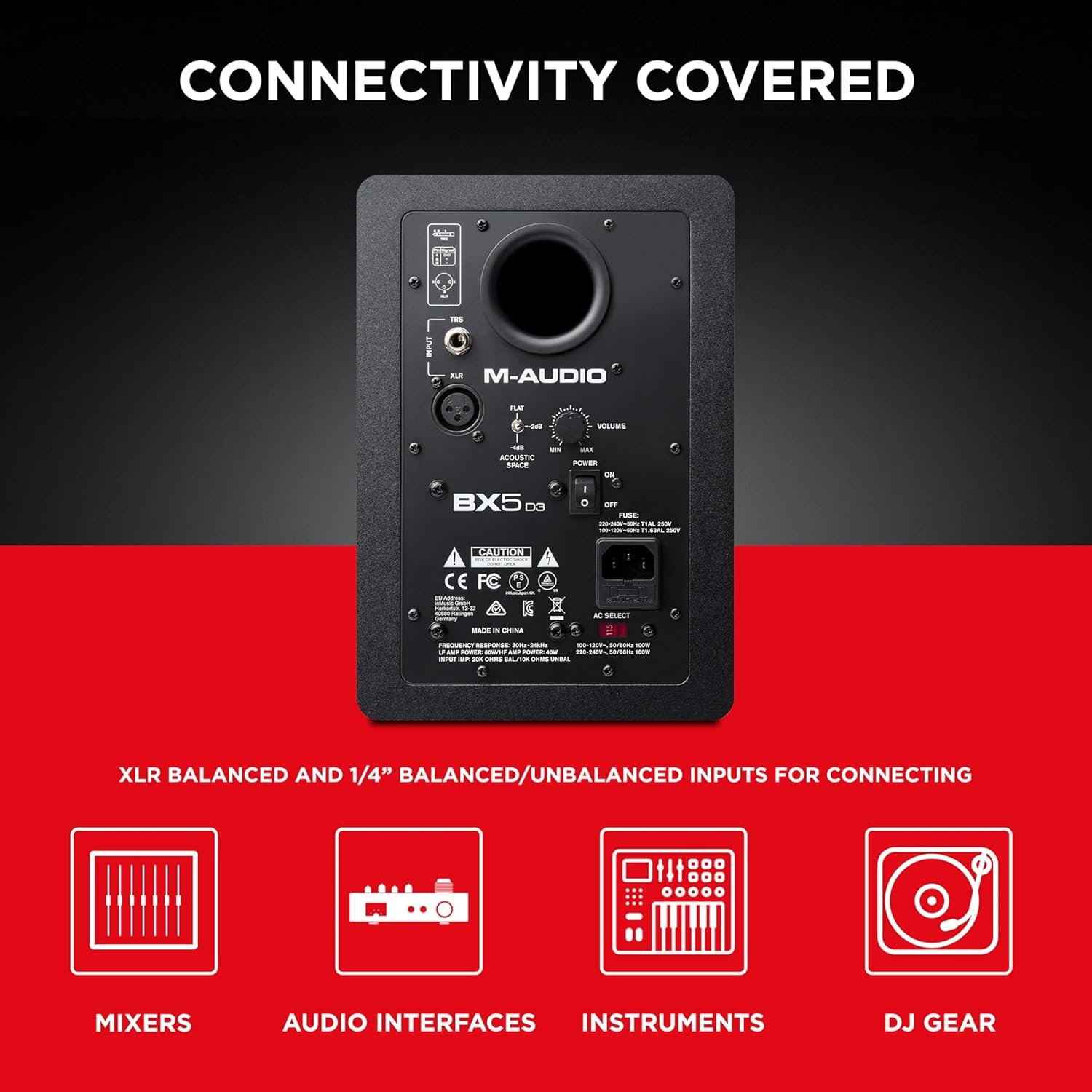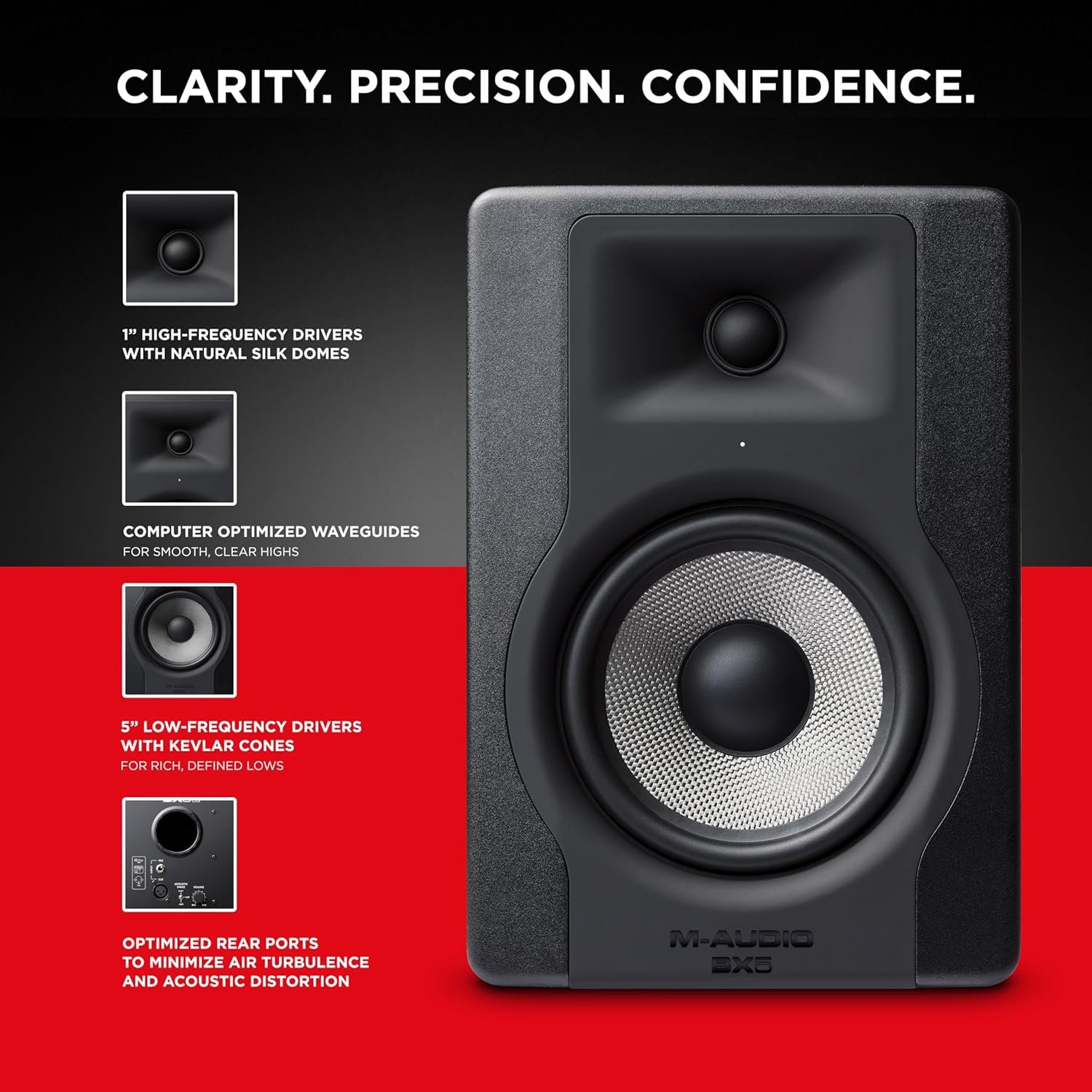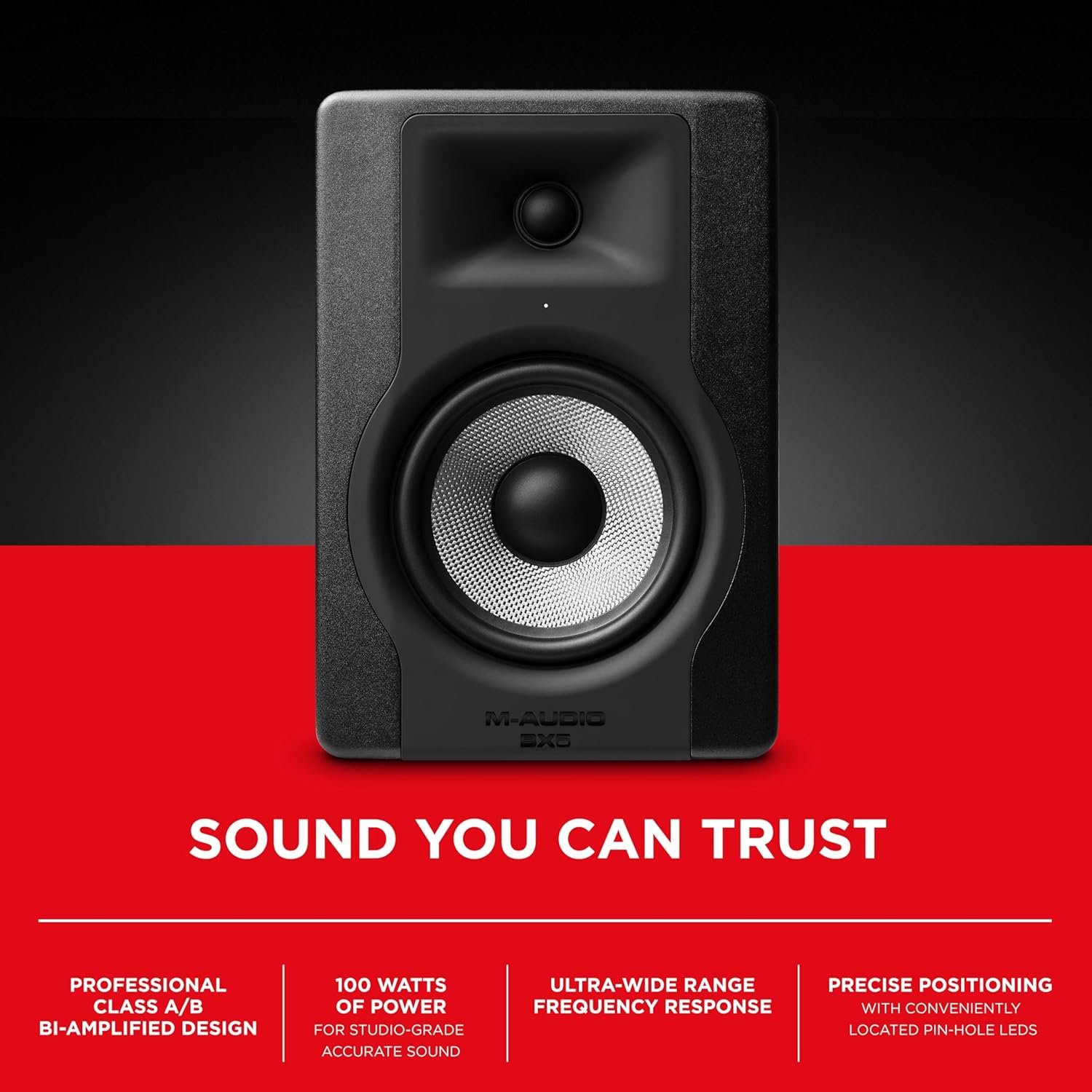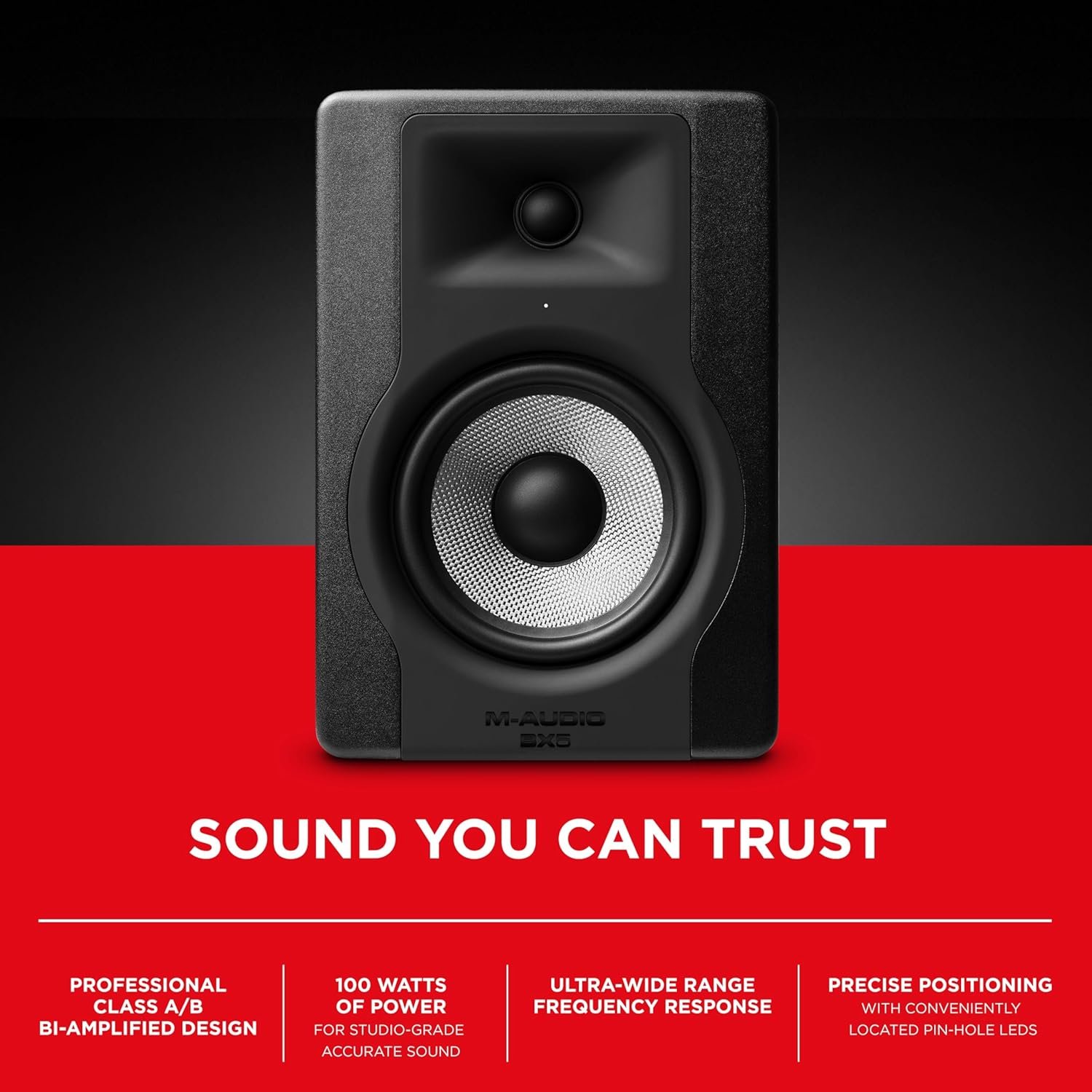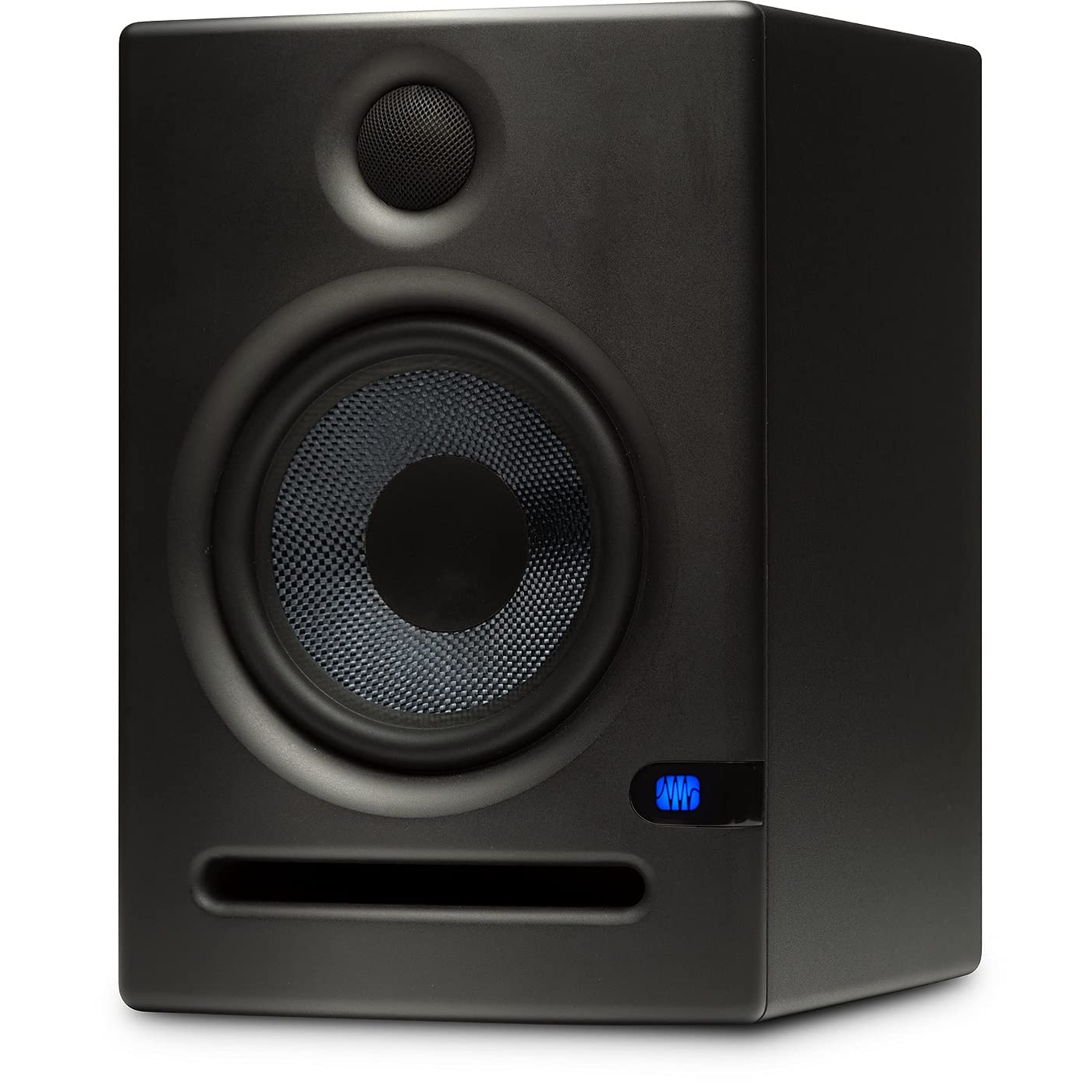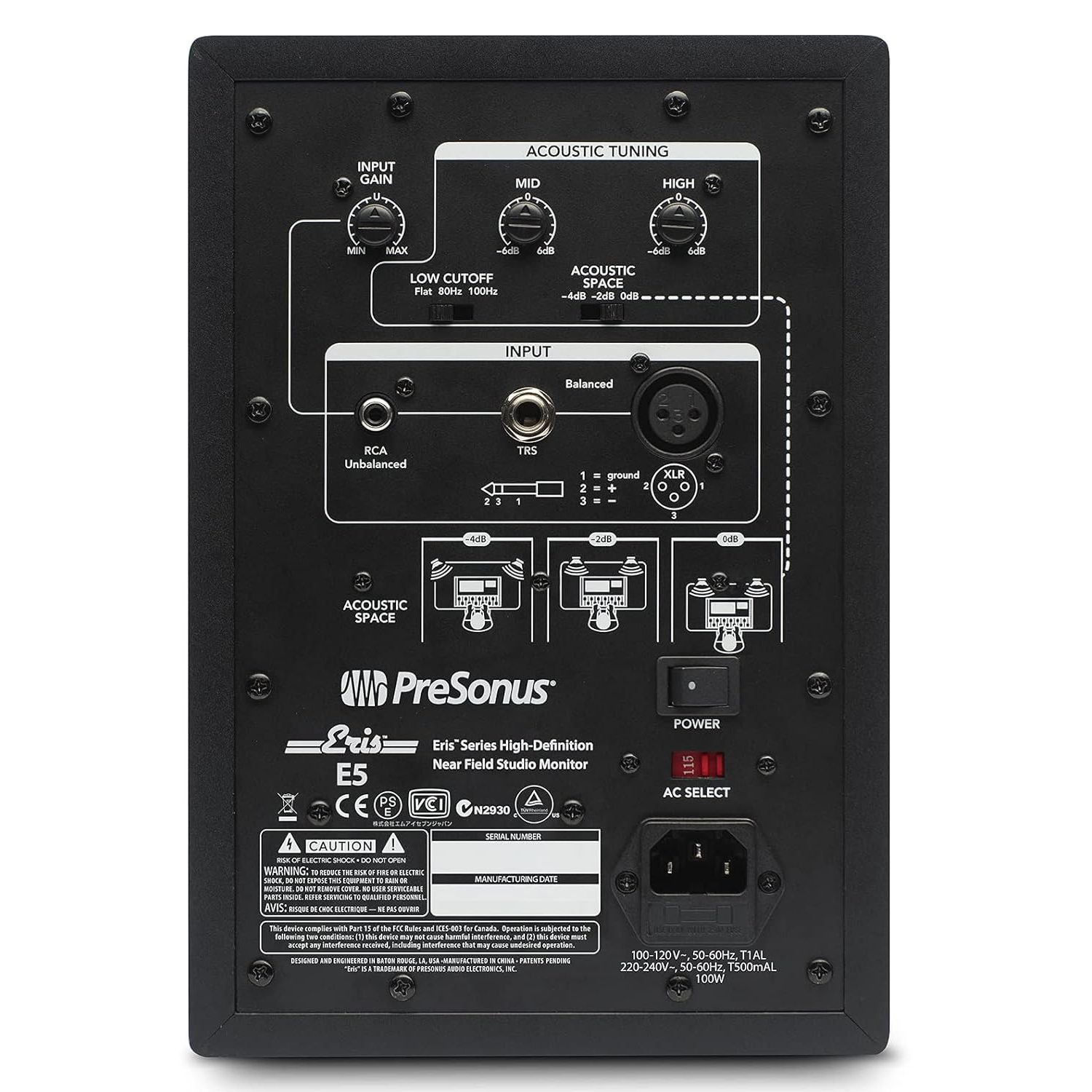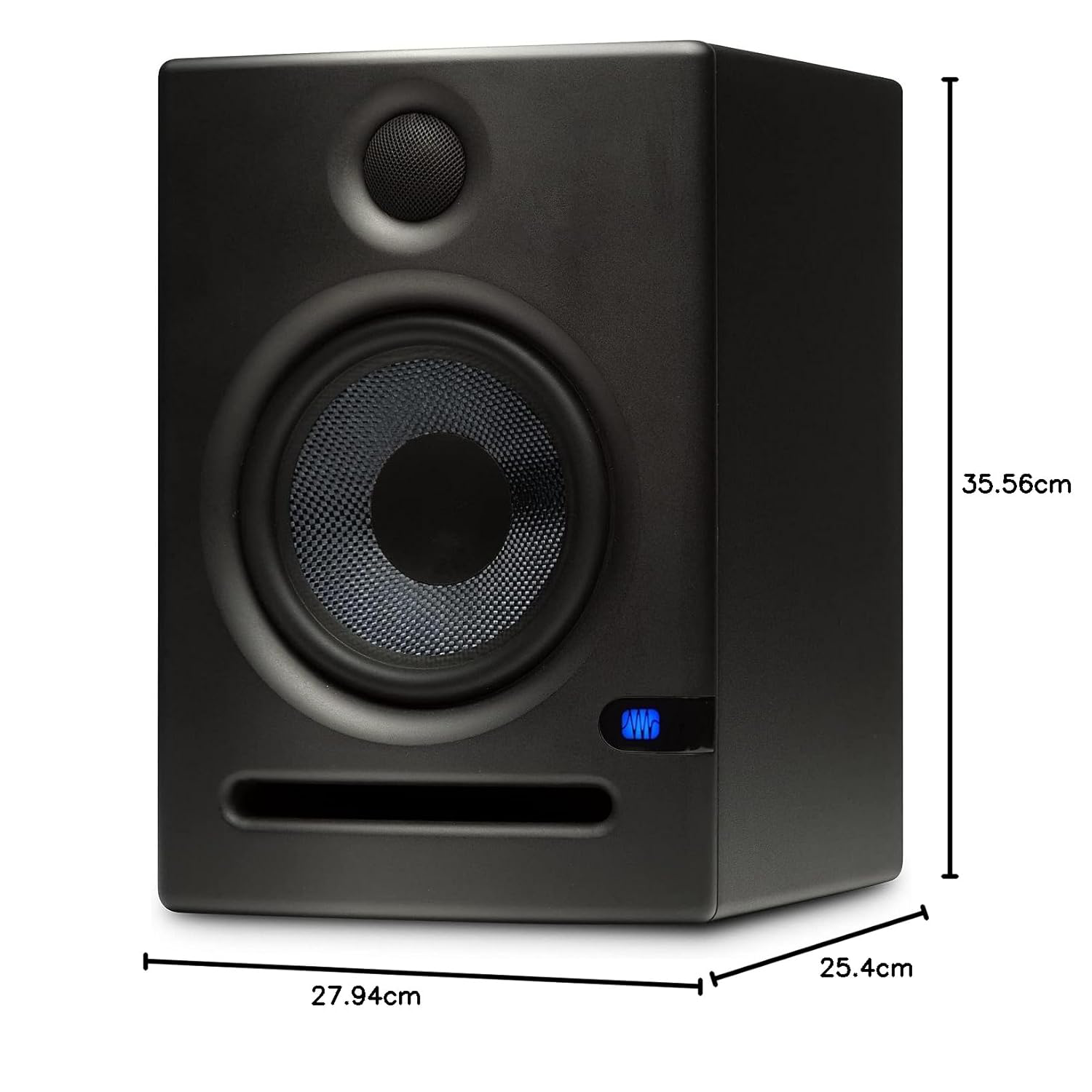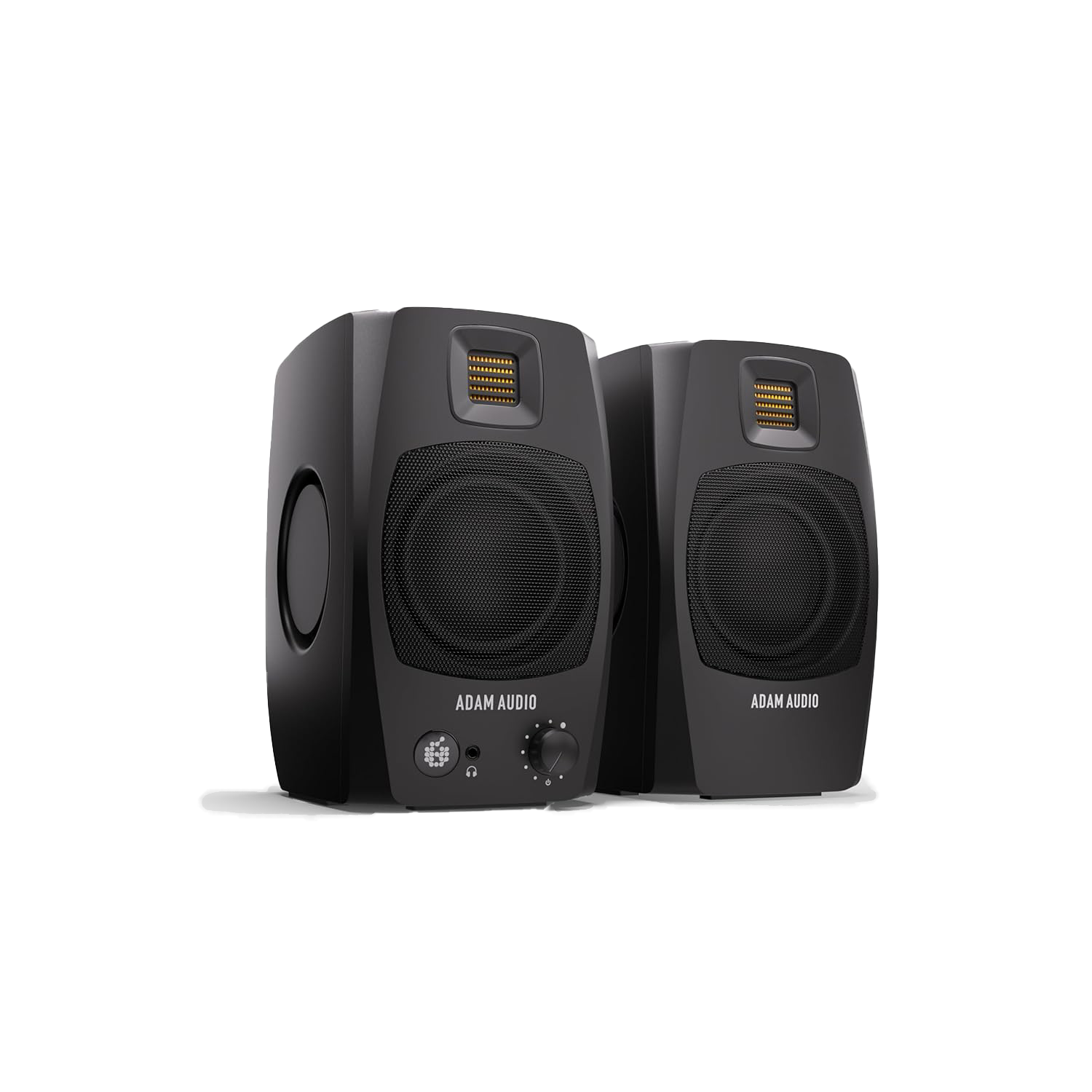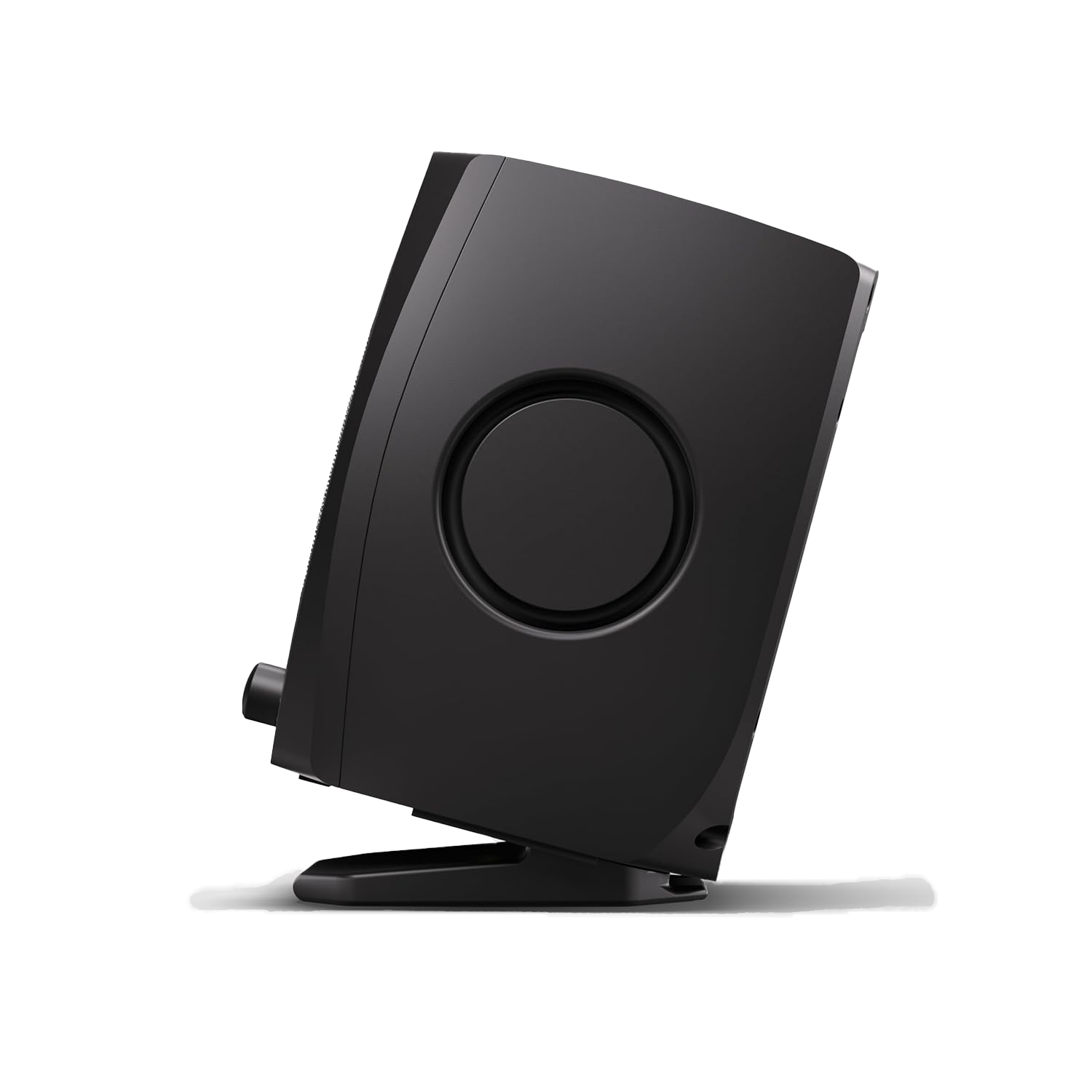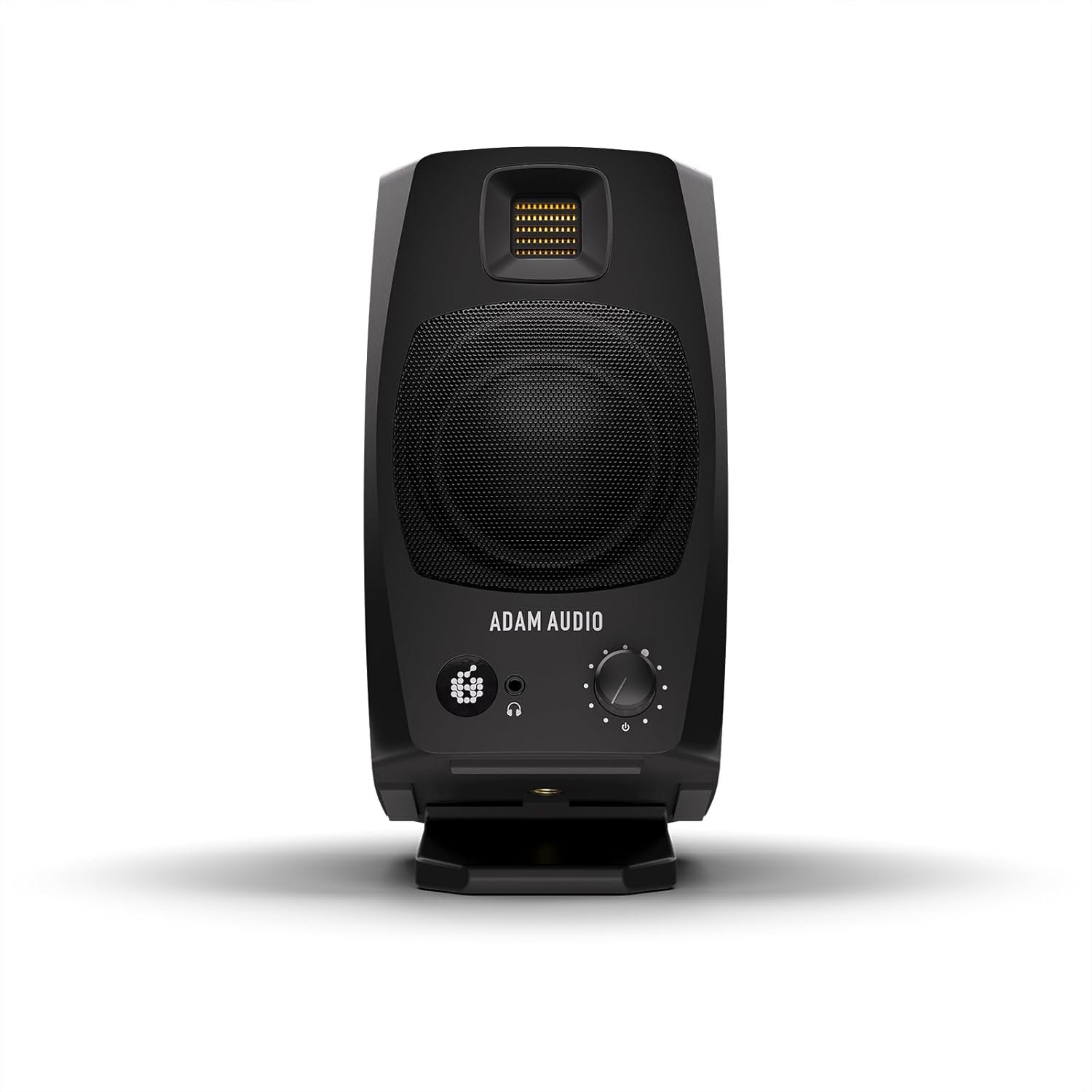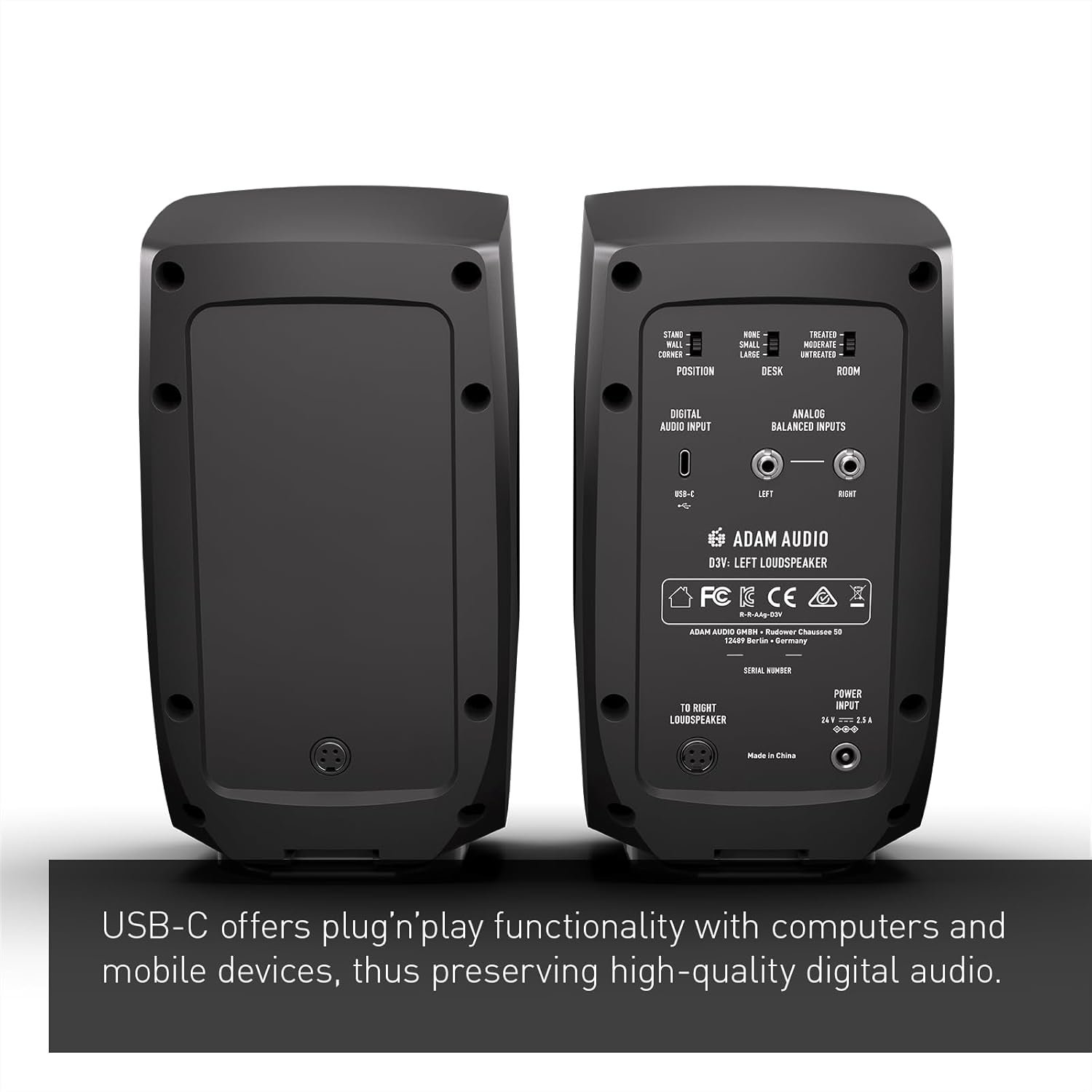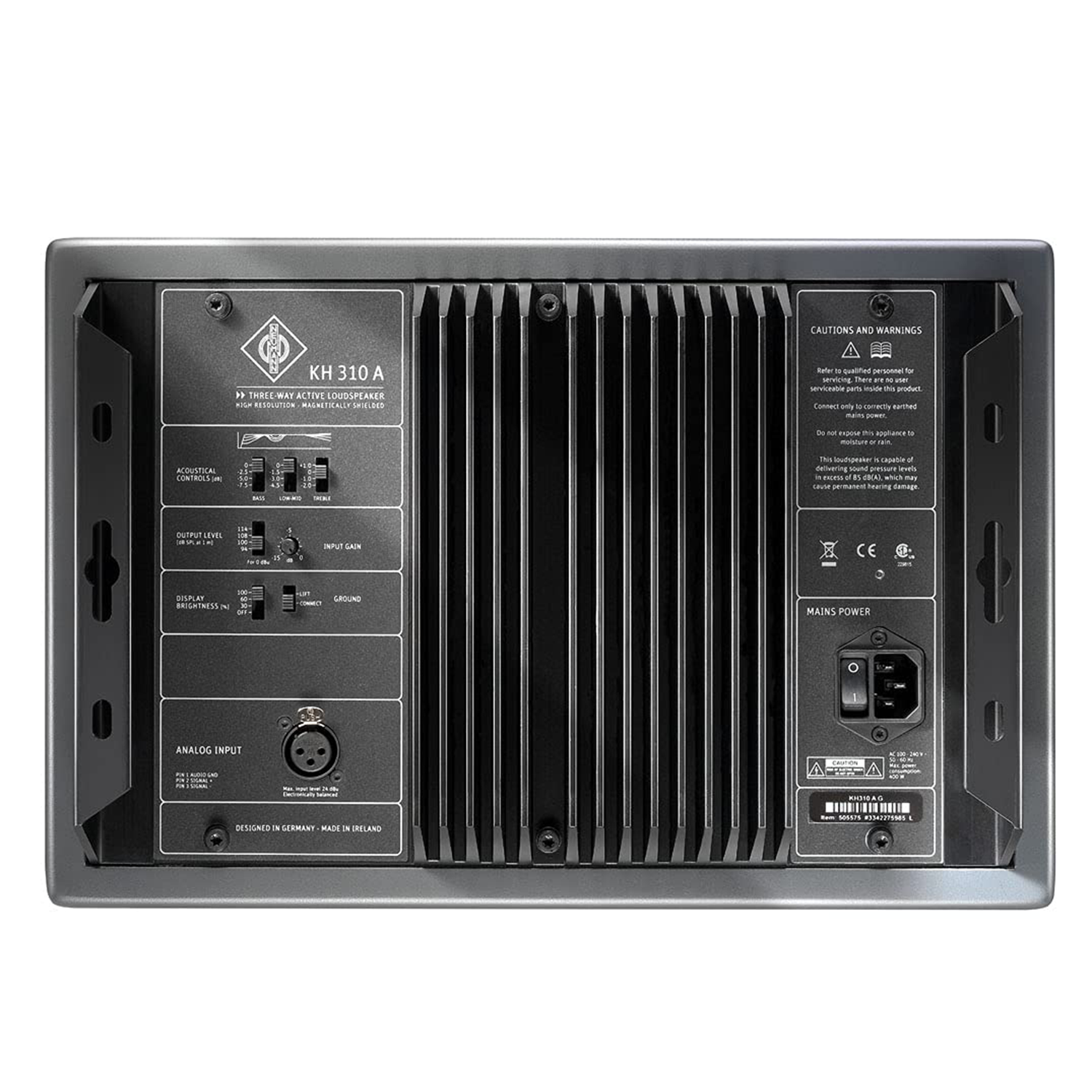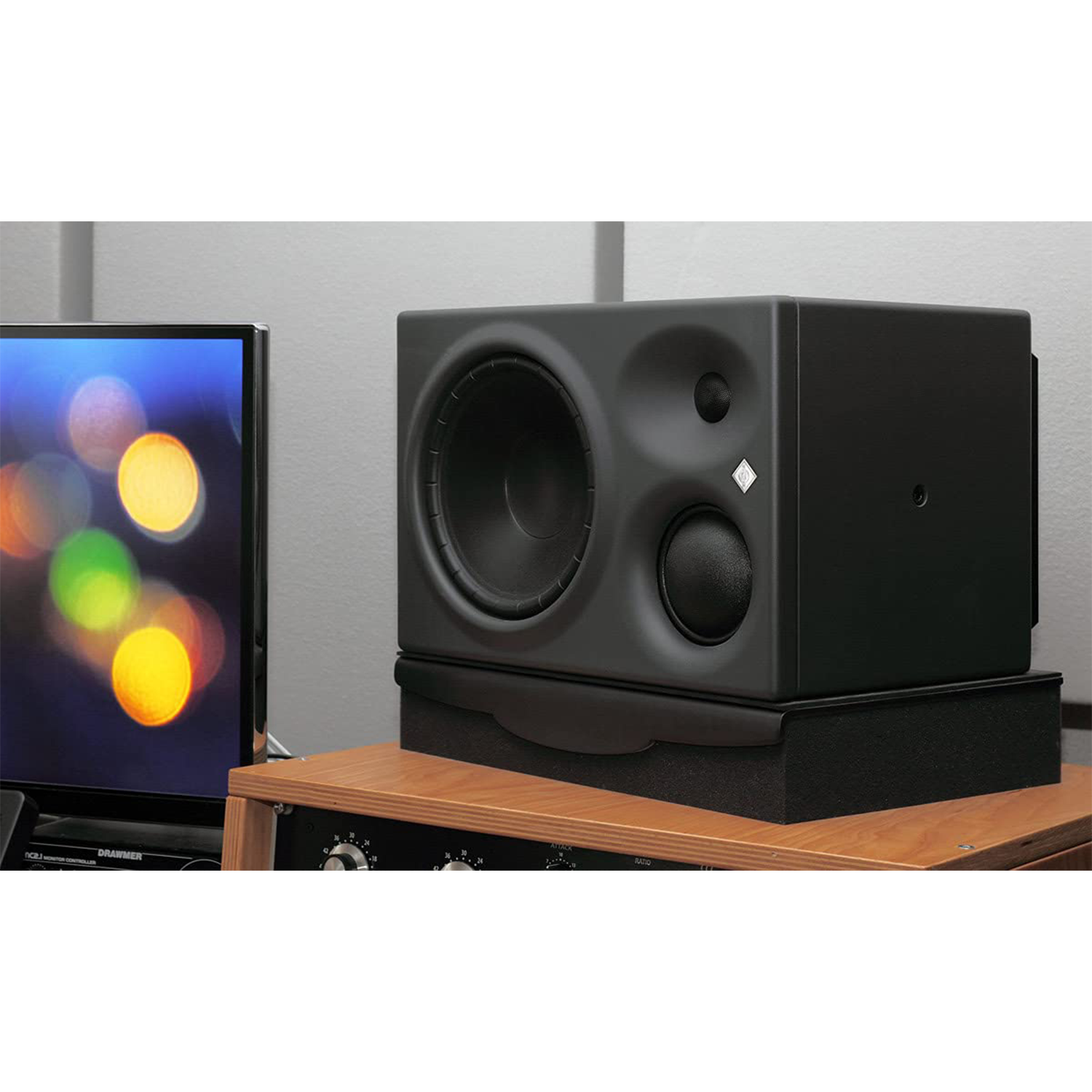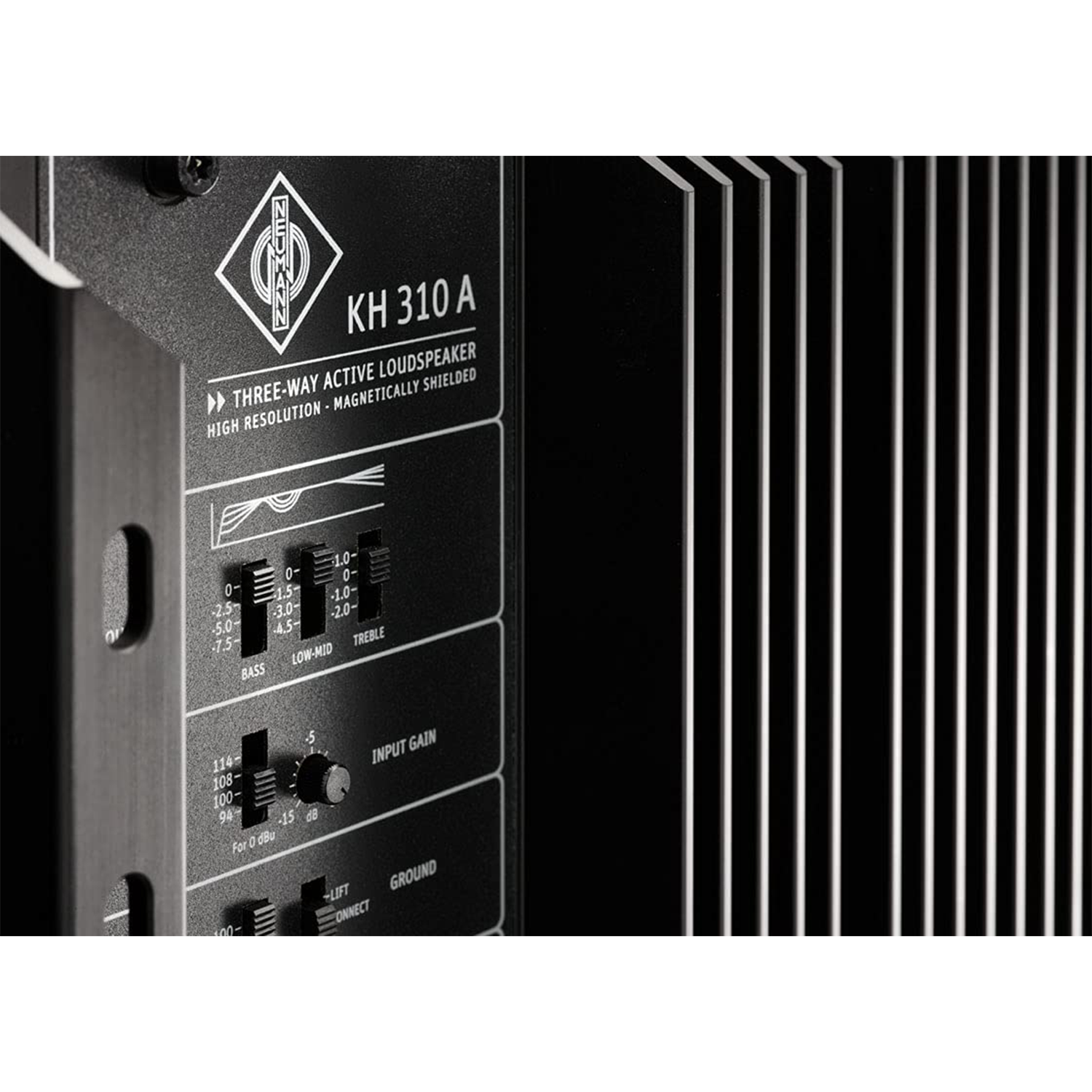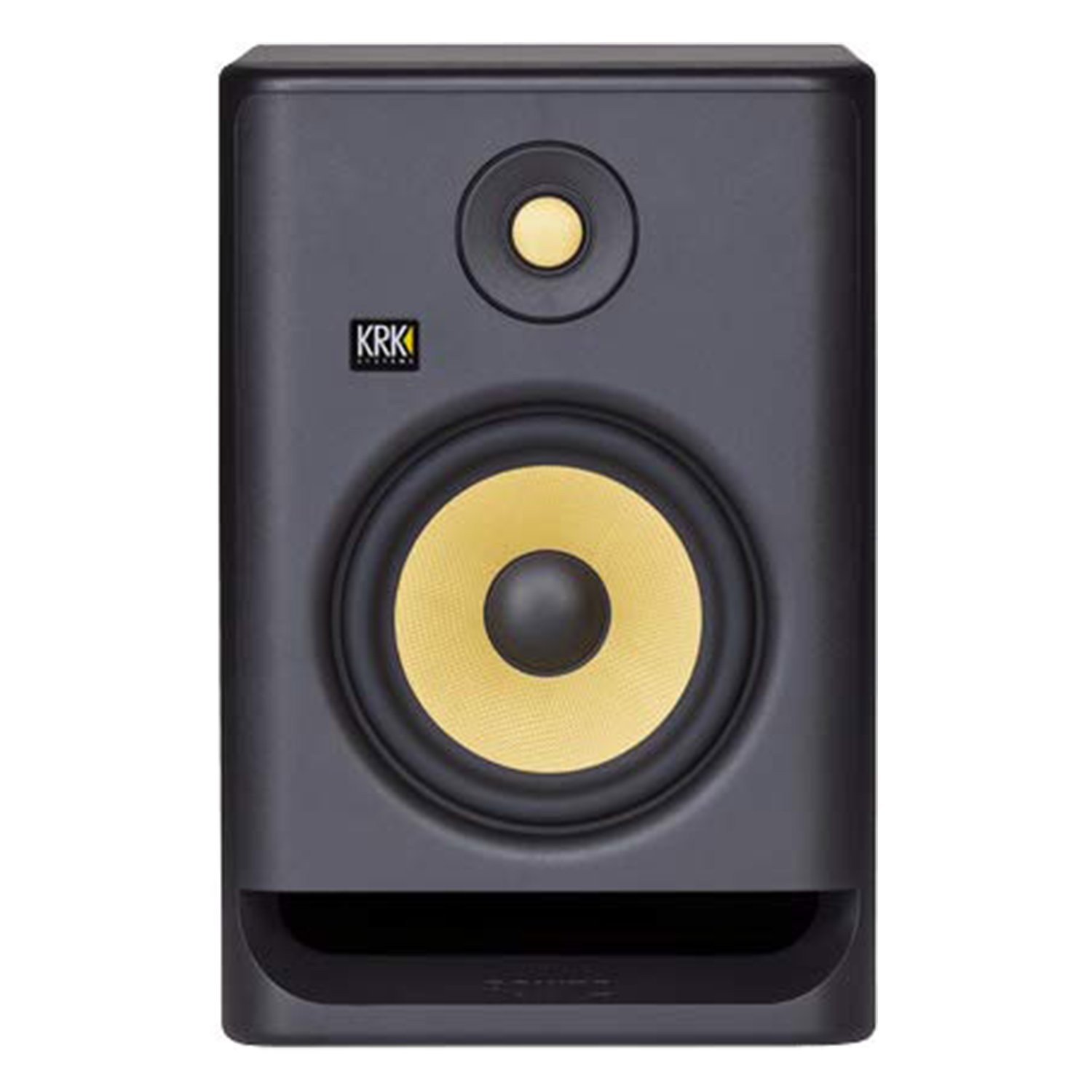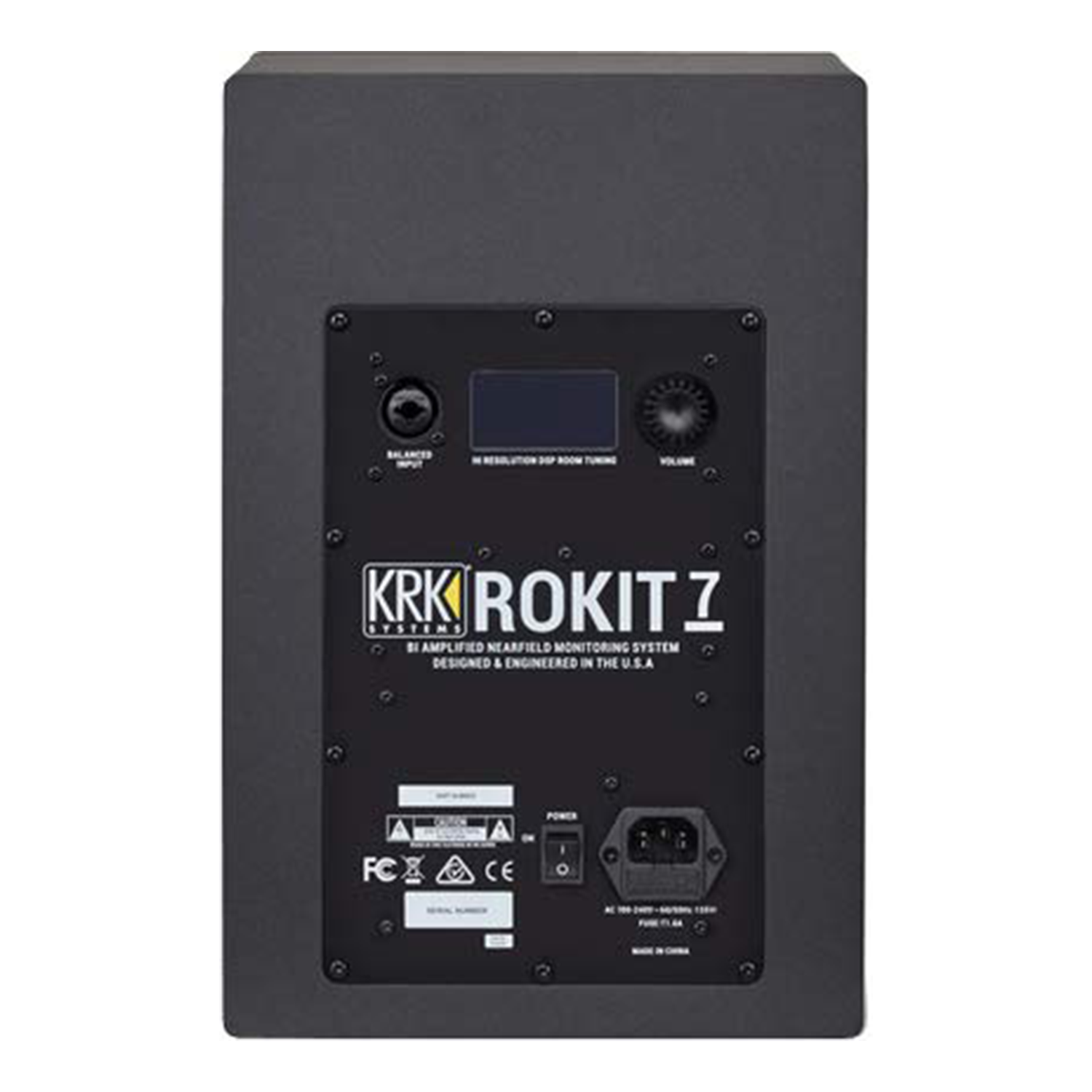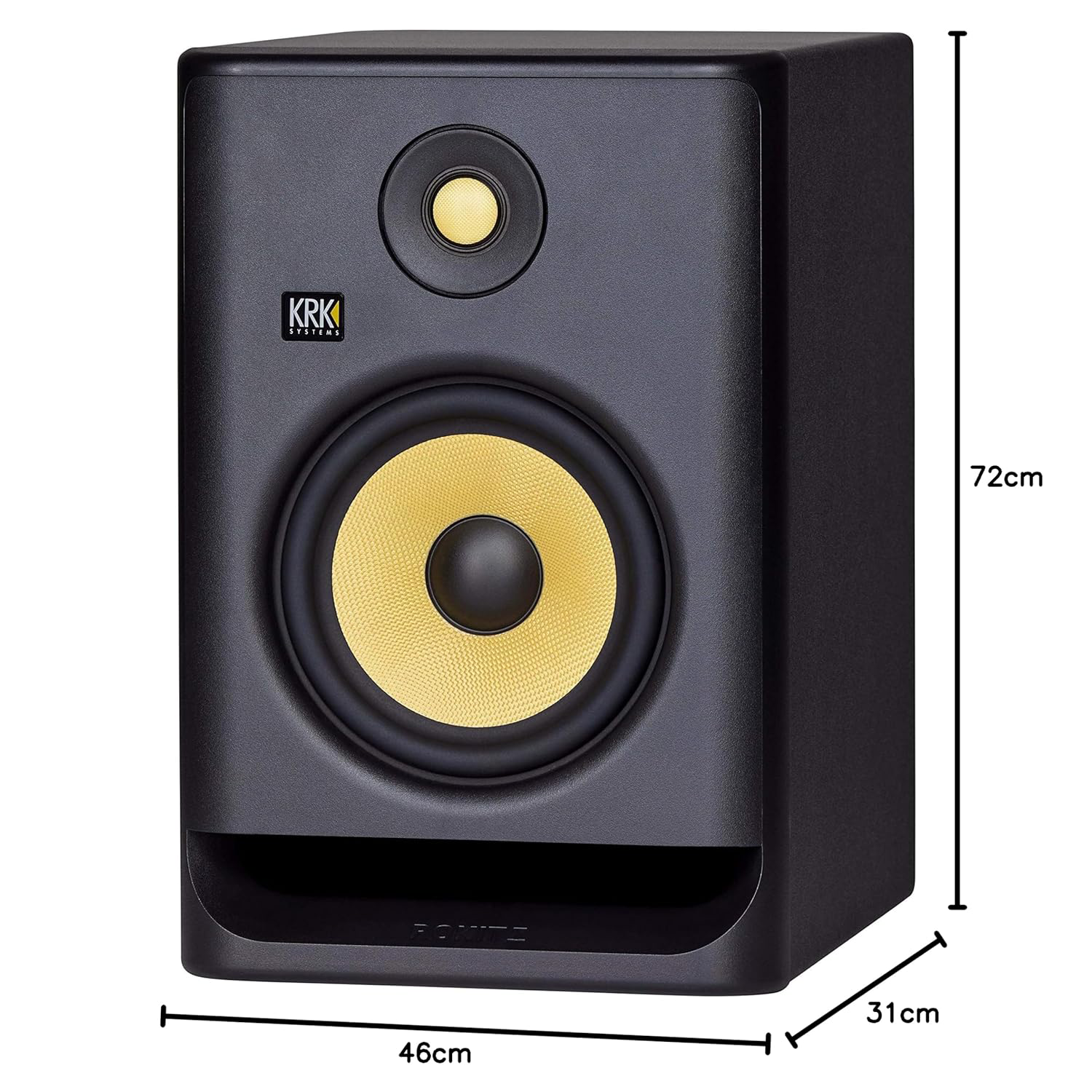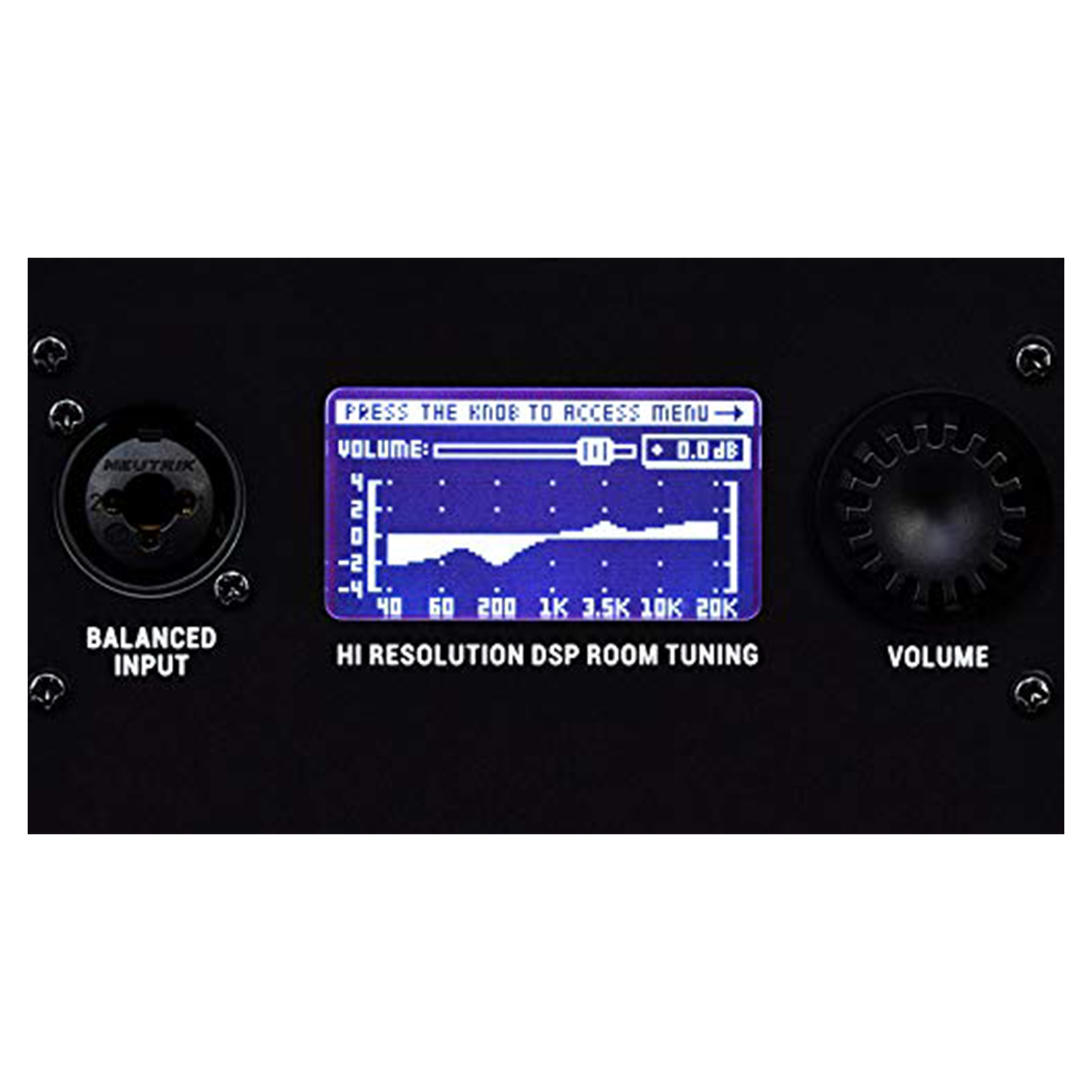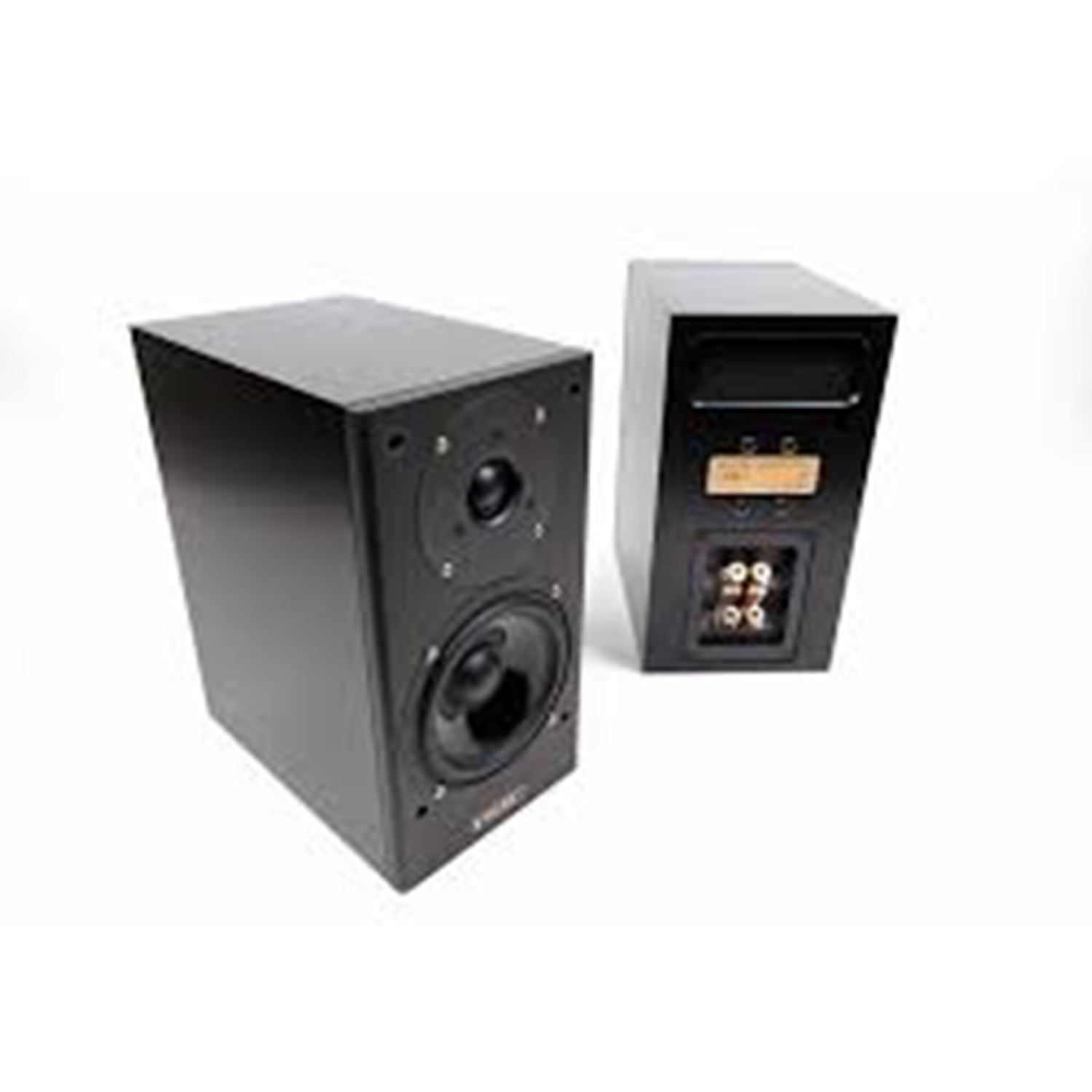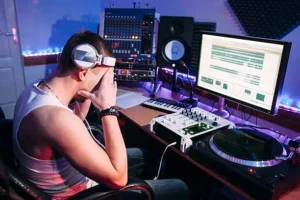Best Studio Monitors for Mixing & Mastering – Top Budget & Professional Picks
After hours of critical listening and testing, we found six of the best studio monitors that deliver exceptional sound clarity and balance for professional and home studios
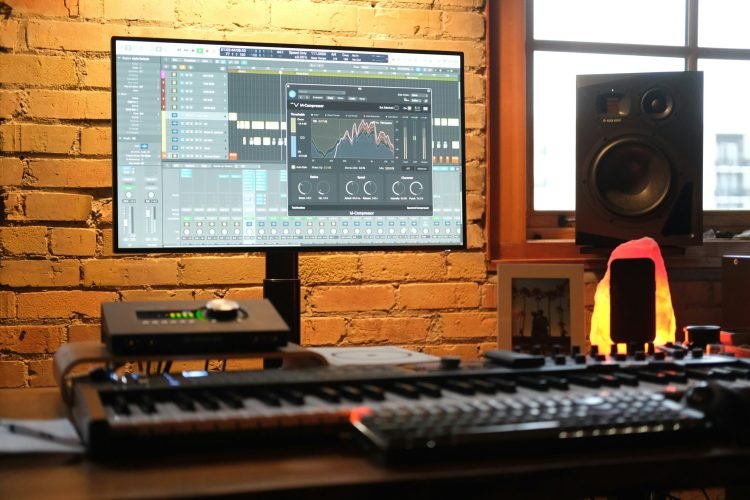
If you’re hunting for the best studio monitors that deliver clean, accurate sound without coloration, you’re in the right place. Our team spent weeks rigorously testing a range of popular studio monitor speakers—evaluating everything from budget-friendly models to high-end professional options—to find out which ones truly stand out for mixing, mastering, and critical listening.
We ran these monitors through real-world scenarios during mixing sessions, playback tests, and casual listening. From nearfield setups in compact rooms to pushing bass-heavy tracks at high volumes, we paid close attention to how each speaker responded. And yes—it was as fun as it sounds!
While some monitors didn’t quite live up to the hype, others exceeded expectations with their clarity, stereo imaging, and overall build quality. Along the way, we also uncovered a few common issues users might face with certain models—if you’re already noticing hums, uneven levels, or distortion, don’t miss our Common Studio Monitor Problems & How to Fix Them guide for practical solutions.
Looking for affordable yet impressive picks? Check out our Best Budget Studio Monitors. Or if you’re after precision-grade sound for professional use, head over to our Best Professional Studio Monitors breakdown.
What Are Studio Monitors and Why Do You Need Them?
Ever wondered why audio professionals rely on dedicated speakers instead of regular ones? That’s where studio monitors come in. Unlike consumer-grade speakers that often boost bass or tweak treble to sound more appealing, studio monitors are built to deliver accurate, uncolored sound—what’s known as a flat frequency response.
This clarity allows you to hear your mix exactly as it is, highlighting every detail, flaw, and frequency. Whether you’re just starting your home studio setup or you’re an experienced producer chasing sonic precision, using proper studio monitors is essential for achieving pro-level results.
Choosing the right pair isn’t just about price—it’s about features, room compatibility, and brand reliability. Our Studio Monitor Buying Guide breaks down everything you should look for, from monitor size to power and placement.
Still figuring out how to set them up for best performance? Our Studio Monitor Setup Guide walks you through optimal placement, calibration, and acoustic treatment tips. And if you’re comparing brands, don’t miss our deep dive into Best Studio Monitor Brands to find which manufacturers deliver the most trusted sound in the industry.
Troubleshooting an issue with your monitors? Buzzing, imbalance, or distortion could be signs of a setup issue—check out our Common Studio Monitor Problems & Fixes to resolve them before they compromise your workflow.
Whether you’re after budget-friendly solutions or professional studio monitors, understanding what these tools do—and why they matter—is the first step to elevating your mix.
Factors to Consider
Choosing the right studio monitors can be overwhelming with so many options available. However, with a few key factors in mind, you can find the perfect pair for your needs. Here’s a simple guide to help you make an informed decision.
If You are interested in learning more about the factors to consider for budget picks you can check the Best Budget Studio Monitors page and Best Professional Studio Monitors page for more premium monitors.
Determine the Budget
- Best Budget Studio Monitors: If you’re just starting out or need a more affordable option, look for monitors that balance performance and price. Many budget studio monitors still offer great sound quality for beginners and home studios.
- High-End Monitors: If you’re working on professional-grade audio production, investing in higher-end monitors may be worth the cost for clearer, more accurate sound.
Active vs. Passive Monitors
- Active Studio Monitors: These come with built-in amplifiers, making them easier to set up. They are ideal for those who want a simple, plug-and-play solution.
- Passive Studio Monitors: These require an external amplifier, offering more flexibility and customization for advanced users, but they require a bit more setup.
Frequency Response
- Flat Frequency Response: Studio monitors are designed to produce a flat frequency response, meaning they don’t enhance bass or treble. This allows you to hear your mix accurately and make better adjustments.
- Wide Frequency Range: Some monitors offer a wider frequency range, which is great for detailed sound, especially in genres like EDM where low-end bass is important.
Size and Room Acoustics
- Compact Monitors: Smaller monitors are ideal for tight spaces or home studios. These are perfect if you’re limited by room size but still want good sound.
- Larger Monitors: For larger rooms or professional studios, bigger monitors with larger drivers provide more power and clarity across the frequency spectrum.
Sound Quality and Accuracy
- Clear Midrange and Highs: Look for monitors with excellent midrange and treble clarity, as these frequencies are crucial for detailed mixing.
- Tight Bass: While studio monitors should produce accurate bass, too much bass can make it hard to mix effectively. A tight bass response ensures your audio isn’t overpowered by low-end noise.
Connectivity
- Inputs: Ensure the monitors have the right connections for your setup (e.g., XLR, TRS, or RCA). Most active studio monitors will come with multiple input options.
- Wireless Options: Some modern studio monitors offer Bluetooth or Wi-Fi connectivity, giving you flexibility and reducing cable clutter in your studio.
Our Top 6 Studio Monitors
| Model | Neumann KH 310 | M-Audio BX5 D3 | PreSonus Eris E5 | Adam Audio D3V | KRK Rokit RP7 G4 | PMC DB1 Gold |
|---|---|---|---|---|---|---|
| Image | 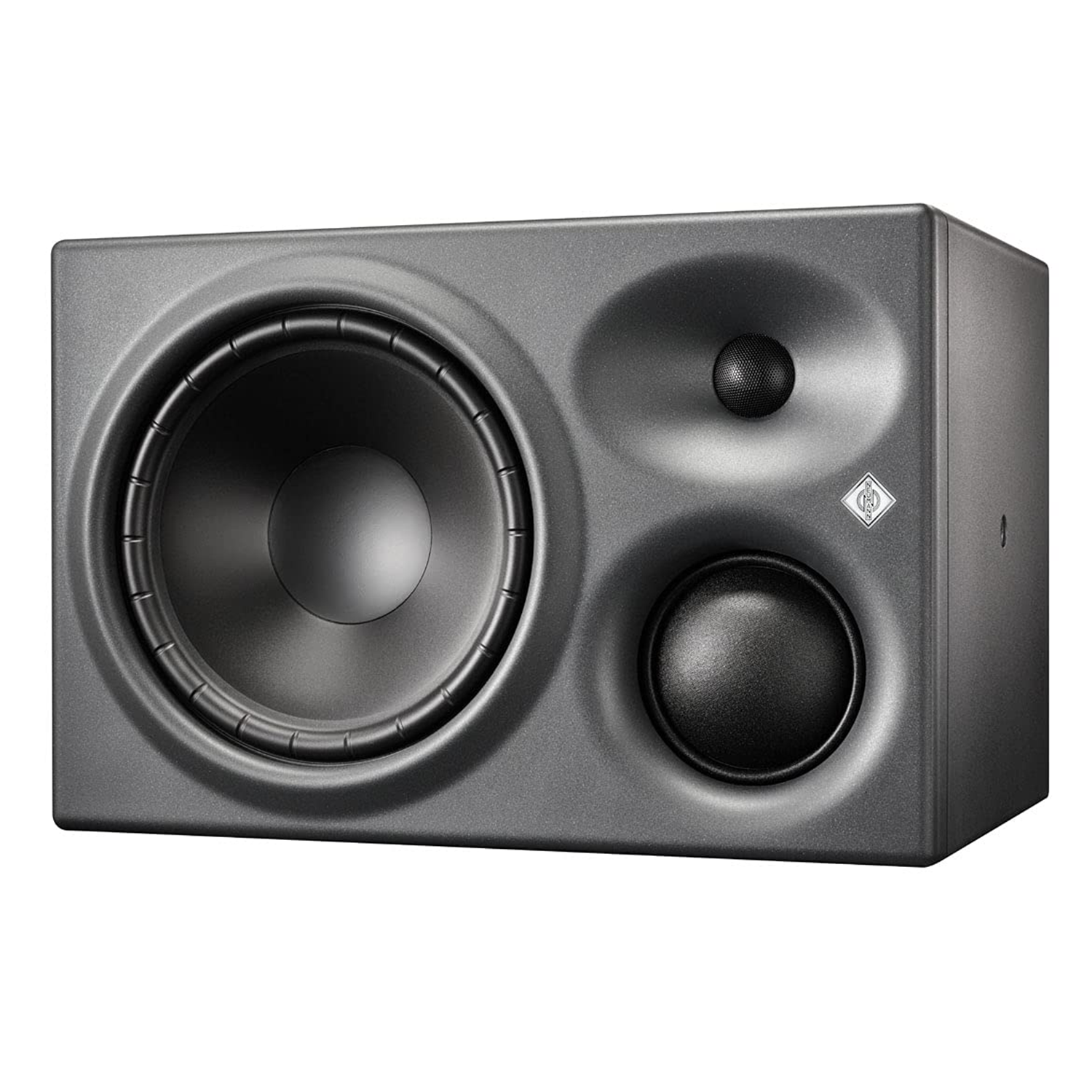 |
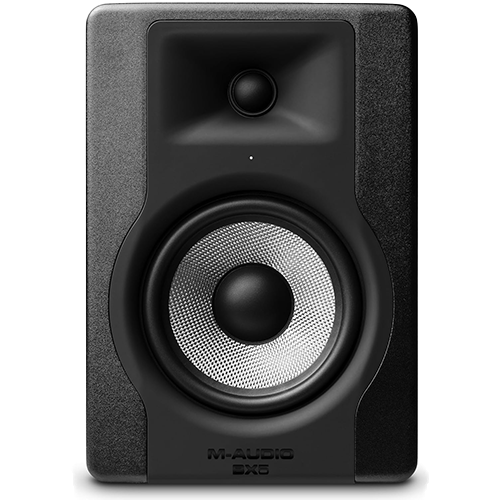 |
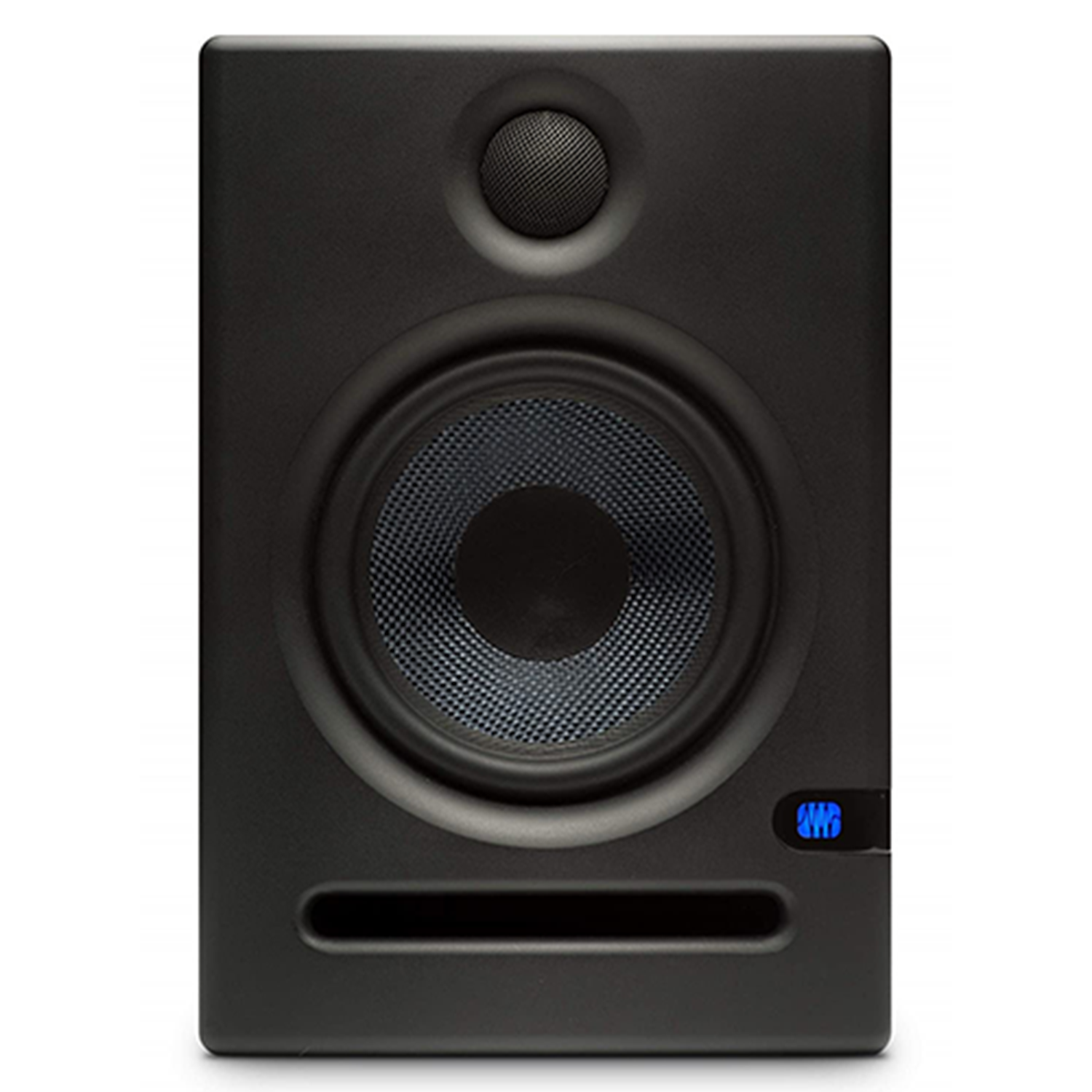 |
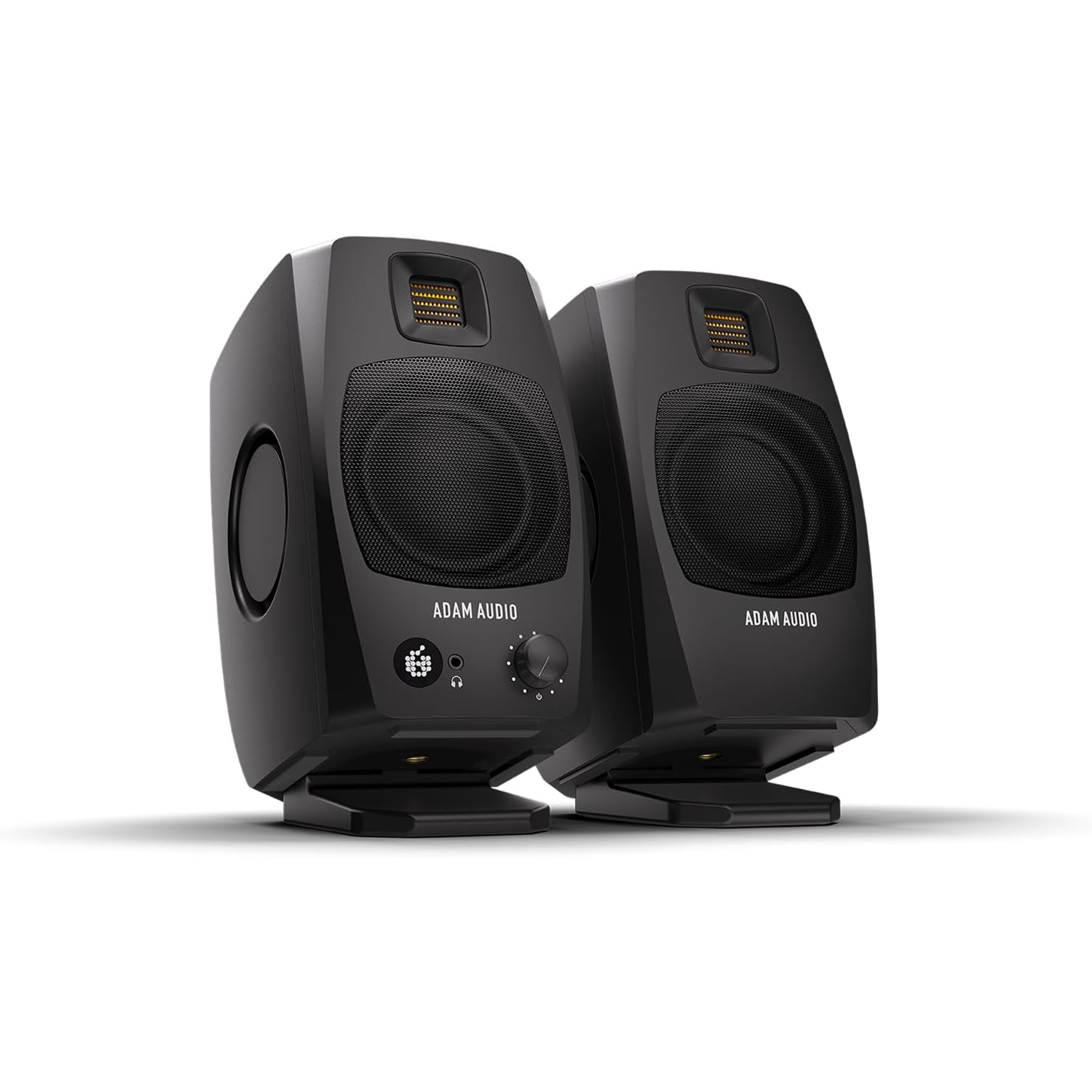 |
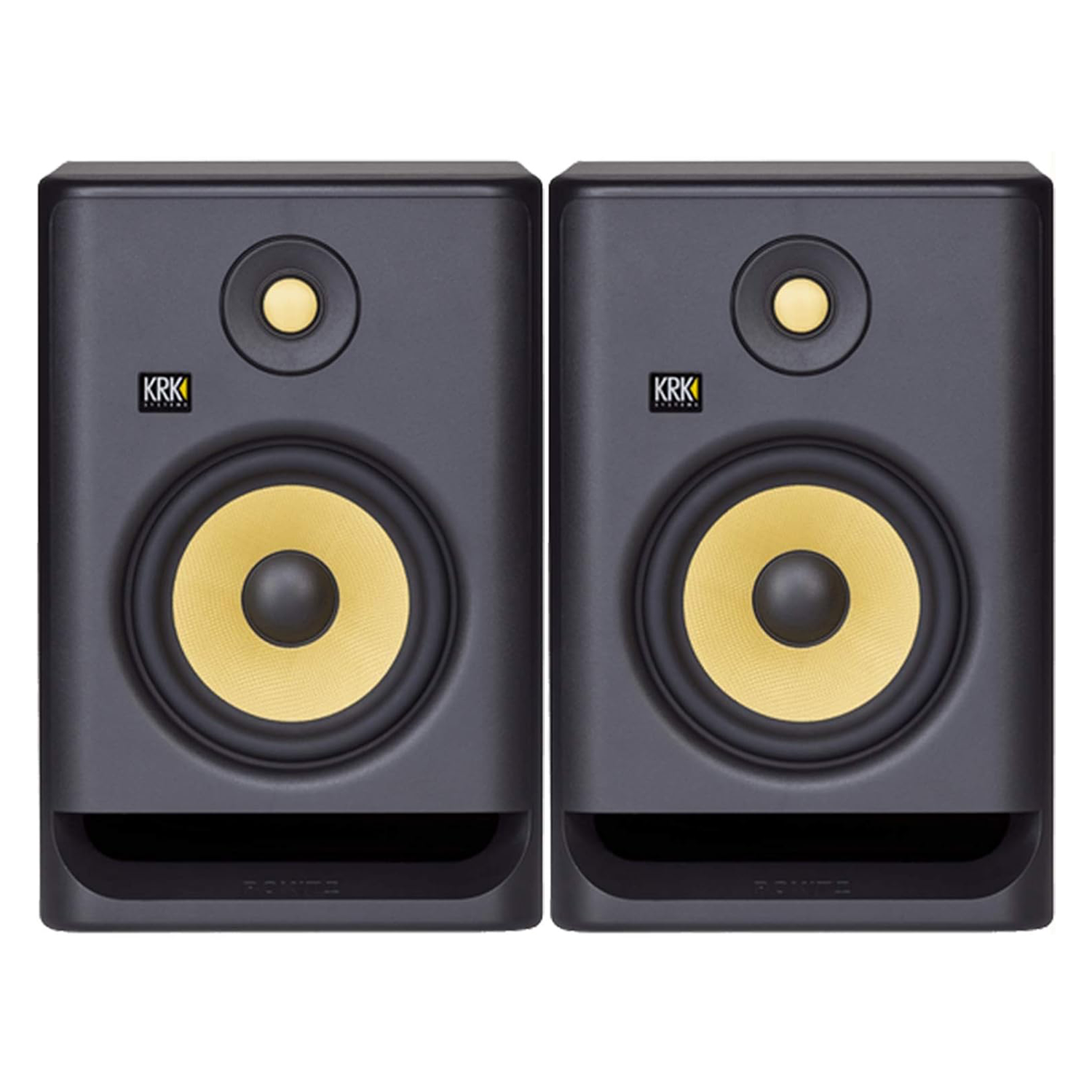 |
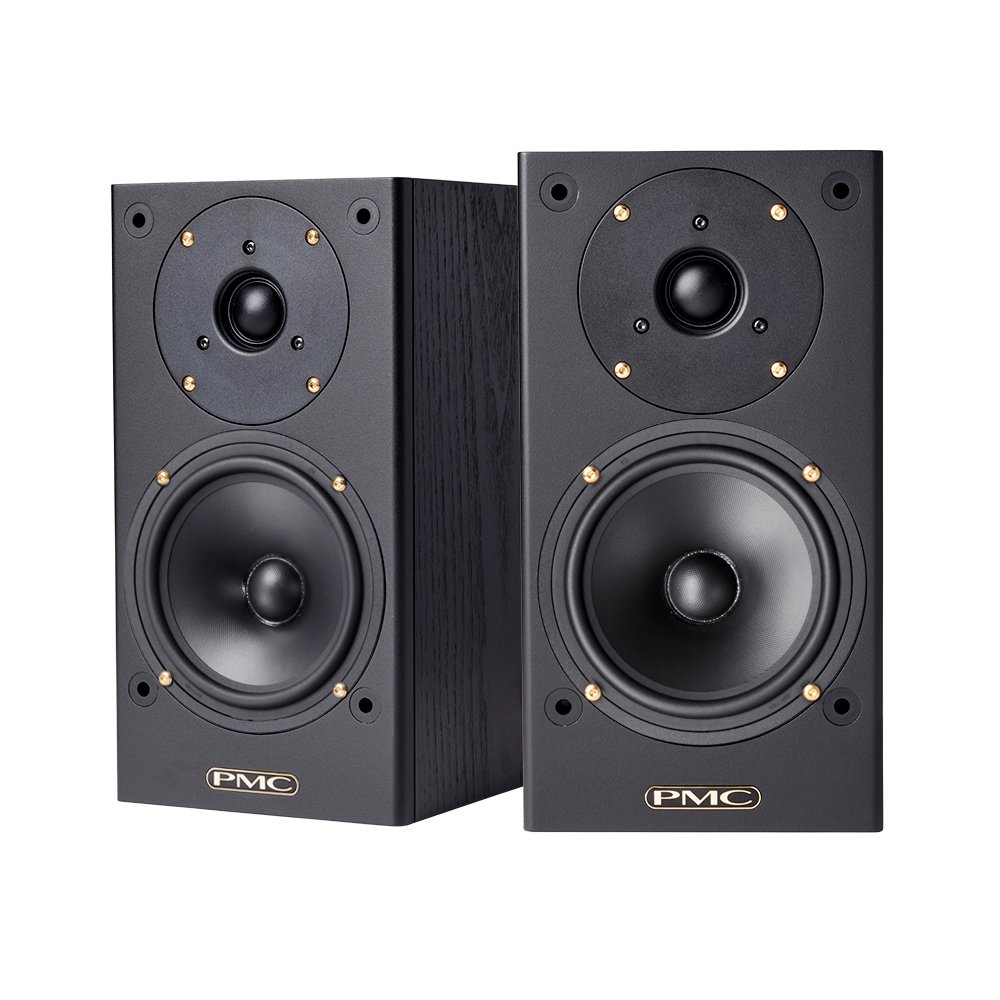 |
| Best for: | Professional Studios | Budget Studio Monitor | Home Studios | Compact Studio Monitor | EDM | Passive Studio Monitor |
| Freq. Resp. | 34 Hz - 21 kHz | 52 Hz – 22 kHz | 53 Hz - 22 kHz | 50 Hz - 23.2 kHz | 42 Hz - 40 kHz | 50 Hz - 25 kHz |
| Tweeter | 1" Dome | 1" Silk Dome | 1" Silk Dome | 1.5" D-ART Ribbon | 1" Kevlar Dome | 1.06" Soft Dome |
| Woofer Size | 8.25" | 5" | 5.25" Kevlar® | 3.5" Aluminum Core | 7" Kevlar Cone | 5.5" Doped Cast Alloy |
| Power | 290 W | 100 W | 70 W | 100 W | 145 W | N/A |
| Dimensions (HxWxD) | 10" x 15.13" x 11.5" | 9.8" x 7.2" x 7.8" | 10.24” x 7” x 7.68” | 7.88 " x 4.5" x 9.5" | 13.4" x 8.9" x 11.2" | 9.06" x 6.1" x 9.21" |
| Max SPL | 116.3 dB | 110 dB | 102 dB | 96 dB | 110 dB | N/A |
| Speaker Configuration | 3-way | 2-Way | 2-Way | 2-Way | 2-Way | 2-Way |
| Click for Price | Check Price | Check Price | Check Price | Check Price | Check Price | Check Price |
Best Budget Studio Monitor
What I Like
- Clear Sound Quality
- Affordable Price
- Compact Design
Where it falls short
- Limited Bass Response
- Build Quality
- No Wireless Connectivity
Why on The List?
M-Audio has been around in the audio industry for more than 2 decades. It is well known for its high-quality yet affordable audio equipment. The brand has earned a reputation for providing budget studio monitors and speakers that deliver exceptional sound. Without breaking the bank, these can make it a favorite choice for home studios and aspiring producers.
With the introduction of the M-Audio BX5 D3 budget studio monitor, M-Audio continues to meet and exceed high functional standards in terms of the best budget studio monitors for home studios, music production, and audio enthusiasts seeking quality sound on a budget.
When I first tried the M-Audio BX5 D3, I was amazed by how easily it filled my space with clear, unfiltered and balanced sound. The bass was tight, and the mids were crisp, making it comfortable for my ears to hear every detail in my mix.
When I powered on the M-Audio BX5 D3, the 100-watt Class D amplifier was delivering a crisp and detailed sound. To my surprise the 5-inch woofer and 1-inch silk dome tweeter was providing a clear and balanced listening experience because they covered a frequency range of 52Hz to 22kHz. Even at lower volumes, these speakers delivered extended bass response without distortion – thanks to the rear-ported design. The BX5 D3 features both balanced XLR and 1/4-inch TRS inputs, ensuring compatibility with a wide range of audio interfaces and mixers.
There is hardly any other budget studio monitor that delivers such a compelling blend of performance and affordability as the M-Audio BX5 D3. If you’re searching for a reliable and accurate pair of monitors to elevate your home studio setup without compromising on value, the M-Audio BX5 D3 is your best budget studio monitor.
For those seeking affordability without sacrificing quality, we recommend exploring our guide to the Best Budget Studio Monitor for 2025.
Key Specs
| Factors | Features |
|---|---|
| Frequency Response | 52 Hz – 22 kHz |
| Tweeter | 1" Silk Dome |
| Woofer Size | 5" |
| Power | 100 W |
| Dimensions (H x W x D) | 9.8" x 7.2" x 7.8" |
| Max SPL | 110 dB |
| Speaker Configuration | 2-Way |
Best Studio Monitor for Home Studios
What I Like
- Affordable Price
- Clear Sound
- Adjustable Controls
Where it falls short
- Limited Bass
- Build Quality
- Small Sweet Spot
Why on The List?
Setting up my home studio taught me a crucial lesson: the importance of accurate sound reproduction. To ensure mixes that translate well, flat frequency response is paramount. For my space, 5-inch drivers proved to be the sweet spot, offering a balance of detail and low-end without overwhelming the room. I learned firsthand how room acoustics can significantly impact sound perception, especially with larger drivers or overly powerful monitors that lack tonal balance. These considerations ultimately led me to choose the PreSonus Eris E5 as the ideal studio monitor for my home setup.
The 80 watts of Class AB biamplifier provide ample headroom for even the most demanding mixes. The 5.25-inch woven-composite drivers deliver accurate and impactful bass without making you spend a penny on your home environment. The 1-inch silk-dome tweeters ensure crystal-clear highs, resulting in a balanced and detailed sound that’s crucial for critical listening during the mixing and mastering process. However, I sensed some decent distortions present in the low end especially at higher volumes, but once you hear it you won’t be able to unhear it.
For a home studio setup the flexible connectivity options, including balanced and unbalanced inputs, a front-panel headphone jack, and a subwoofer output, gives us the control for seamless integration into any home studio setup.
For the serious home studio producer or a gamer demanding immersive sounding experience or a movie buff seeking cinematic audio or someone who simple appreciate high-quality audio for everyday listening, the PreSonus Eris E5 offers a professional-grade audio experience.
Key Specs
| Factors | Features |
|---|---|
| Frequency Response | 53 Hz - 22 kHz |
| Tweeter | 1" Silk Dome |
| Woofer Size | 5.25" Kevlar® |
| Power | 70 W |
| Dimensions (H x W x D) | 10.24” x 7” x 7.68” |
| Max SPL | 102 dB |
| Speaker Configuration | 2-Way |
Best Compact Studio Monitor
What I Like
- Compact design
- Type C connectivity
- Dual Passive Radiator
Where it falls short
- Higher price
- Lacks deep bass
- Absence of dedicated subwoofers
Why on The List?
When the space is limited, finding the best compact studio monitors can be a daunting task. You want quality studio sound without sacrificing performance, and it’s tough to strike that balance. Accurate sound, less footprint and a compact design – it’s not easy to find the ideal fit. But we’ve done the hard work for you, and we’ve found the best – The Adam Audio D3V. After personally testing this model, I can confidently say it delivers on all fronts.
One of the standout features of the Adam Audio D3V is its compact size. With dimensions of just 8.7” H x 7.9” W x 5.9” D and weighing only around 6.6 pounds, this monitor is perfect for those working with limited space. Whether you’re setting up on a desk or a small studio corner, the D3V fits comfortably without crowding your workspace. They also sound bigger than they look.
Only based on the dimensions, it’s not in the top position for this segment. It’s packed with amazing features that deliver impressive audio performance. The two drivers – 3.5-inch woofer and D-ART tweeter – join together to produce rich bass and crystal-clear highs, making mixing and listening perfect. The dual passive radiators enhance low-end response, providing a fuller sound without taking up extra space.
Unlike their size, they are not priced low. They come with a higher price tag, which might make them less appealing for those who are on a budget. It also lacks that deep “boom boom” bass found in larger monitors. So, if you’re after huge low-end genres like EDM, it might not be the best fit for you. On the plus side, the Type-C connectivity offers a modern, hassle-free connection to your gear. However, if you value clear, precise sound in a compact design, the D3V is still a great investment.
When comparing the Adam Audio D3V to the IK Multimedia iLoud Micro, which is a good alternative, the D3V outperforms in terms of sound clarity and overall performance. Although the iLoud Micro is slightly more expensive, the Adam Audio D3V provides a superior listening experience and more versatility.
If you’re looking for clear, precise sound in a compact design, the Adam Audio D3V is worth considering.
Key Specs
| Factors | Features |
|---|---|
| Frequency Response | 5 Hz - 23.2 kHz |
| Tweeter | 1.5" D-ART Ribbon |
| Woofer Size | 3.5" Aluminum Core |
| Power | 100 W |
| Dimensions (H x W x D) | 7.88 " x 4.5" x 9.5" |
| Max SPL | 96 dB |
| Speaker Configuration | 2-Way |
Best Professional Studio Monitor
What I Like
- Exceptional clarity
- Accurate Soundstage
- Wide Frequency Range
Where it falls short
- Heavy price
- Heavy weight
Why on The List?
For almost a century, Neumann has been a name best known for its precision, quality, and innovation in the world of audio. The brand has earned an enormous amount of trust from professionals across industries particularly in the audio industry. Neumann is best known for producing quality studio monitors that offer exceptional accuracy and reliability, making them a go-to for those who demand the best. The Neumann KH310 carry forwards this legacy by delivering a performance that meets the high standards of any professional studio setup.
For any professional studio monitor, zero tolerance on accurate sound reproduction is absolutely necessary. Neumann KH310 delivers it by equipping itself with a 3-way speaker design which means it uses three dedicated drivers for low, mid and high frequencies. The active speaker setup of KH310 ensures that you don’t need an external amplifier, which simplifies the setup and helps keep the system compact and efficient. Packing itself with the front-facing bass reflex port, it provides a deeper, more clear low end, reducing distortion and enhancing overall performance. The KH310 is typically used in near-field applications, making it ideal for project, music, broadcast, and post-production studios focused on recording, mixing, and mastering, as claimed by Neumann themselves.
While Neumann KH310 excels in many features, there are quite a few things to consider if I am being transparent. First, the price point. For someone on tighter budget or looking for something affordable this is not the best choice. You might go with Yamaha HS 8 or the KRK Rokit 8 G4 as they provide solid performance at lower price points but we comparing it with Neumann KH310 would be like comparing apples to oranges. If you want are into bass heavy genres you might need an external woofer to complement the setup but the other alternative would be to go with KRK Rohit RP7 G4.
If you’re in the market for a reliable and accurate studio monitor, the Neumann KH310 is certainly worth considering, especially if you prioritize precision and performance. While it may not be the most budget-friendly option, its features make it a great fit for those who need top-tier sound reproduction in professional environments. Whether you’re mixing, mastering, or just looking to upgrade your setup, taking a closer look at the KH310 could be the next step toward enhancing your audio experience.
If you are looking for more high-end options specific for professional use, explore our Best Professional Studio Monitors guide for top picks.
Key Specs
| Factors | Features |
|---|---|
| Frequency Response | 34 Hz - 21 kHz |
| Tweeter | 1" Dome |
| Woofer Size | 8.25" |
| Power | 290 W |
| Dimensions (H x W x D) | 10" x 15.13" x 11.5" |
| Max SPL | 116.3 dB |
| Speaker Configuration | 3-way |
Best Studio Monitor for Electronic Music (EDM)
What I Like
- Bass-Heavy
- Clear Sound
- Customizable EQ
- Modern Design
Where it falls short
- High price
Why on The List?
$11.8 billion per year is the revenue generated by EDM genres. Yes, you read it right. If you are some contributing to this $7.4 billion industry and looking for studio monitor tailored for EDM? Then yes! you are in the right place. My pick is KRK Rokit RP7 G4. Lets see what made me pick it.
Non-negotiable are the punch and precision when it comes to producing electronic dance music (EDM). The KRK Rokit RP7 G4 delivers on both fronts and making it a favorite among EDM producers worldwide. First, a strong bass response is essential for deep, punchy low-end frequencies. The 7″ Kevlar woofer ensures bass-heavy tracks translate perfectly. Accompanied by total of 145W high power output produces the necessary volume without distortion. These KRK studio monitors are designed to bring out the energy, bass and clarity that EDM demands, ensuring every beat and drop breaks the ceiling.
What sets the KRK Rokit RP7 g4 apart from other monitors in its class are the LCD display for EQ and setup parameters. Now, this is a game changer allowing us for quick adjustments on the fly, especially useful for untreated rooms. The DSP-driven room tuning with 25 graphic EQ settings on the LCD ensures optimal sound for any environment. Additionally, the front ported design allows for better bass response and reduces low-end distortion. Plus, the LED indicators provide a clear view of the speaker’s status. Armed with Kevlar Aramid Fiber drivers for both the woofer and tweeter, you get unmatched durability and precise sound that most monitors simply can’t match in this price segment. These are the features that make the KRK Rokit RP7 G4 standout.
The KRK Rokit RP7 G4 might not deliver the deepest sub-bass frequencies needed for some bass-heavy genres. Its powerful 7” woofer could lack the extreme low-end punch that some EDM producers require for full bass impact. If you’re willing to trade off RP7 G4’s versatility, room tuning, EQ adjustments, and power efficiency, then you might want to consider the Yamaha HS8 as an alternative.
When it comes to producing electronic dance music (EDM), precision and punch are non-negotiable. The KRK Rokit RP7 G4 delivers on both fronts, making it a favorite among EDM producers worldwide. These KRK studio monitors are designed to bring out the energy, bass, and clarity that EDM demands, ensuring every beat and drop hits with full impact.
If you’re looking for a monitor that balances power and precision for your EDM productions, the KRK Rokit RP7 G4 is a strong contender. Explore how it can elevate your sound experience today.
Key Specs
| Factors | Features |
|---|---|
| Frequency Response | 42 Hz - 40 kHz |
| Tweeter | 1" Kevlar Dome |
| Woofer Size | 7" Kevlar Cone |
| Power | 145 W |
| Dimensions (H x W x D) | 13.35" x 8.86" x 11.19" |
| Max SPL | 110 dB |
| Speaker Configuration | 2-Way |
Best Passive Studio Monitor
What I Like
- High durability
- Excellent stability
- Long Life
Where it falls short
- High cost
- External amplifier requirement
Why on The List?
Key Specs
| Factors | Features |
|---|---|
| Frequency Response | 50 Hz - 25 kHz |
| Tweeter | 1.06" Gabric Soft Dome |
| Woofer Size | 5.5" Doped Cast Alloy |
| Power | N/A |
| Dimensions (H x W x D) | 9.06" x 6.1" x 9.21" |
| Max SPL | N/A |
| Speaker Configuration | 2-Way |
For a wider range of options across various price points you can check out our Best Budget Studio Monitors guide for affordable picks or explore our Best Professional Studio Monitors for premium, high-end choices and expert recommendations.
Studio Monitors FAQ: Answers to Common Questions
Can You Use Studio Monitors for Regular Speakers?
In a single word, yes. Studio monitors can be used as regular speakers but there are few things to keep in mind. Studio monitor speakers are designed for accurate, flat sound reproduction, making them ideal for music production. But they can also be used for casual listening. The regular speakers emphasize more on bass or treble for more enjoyable music listening experience. On the other hand, studio monitors offer an uncolored, clean and neutral sound. If you’re looking for the best monitor speakers for home use, there are options like the best small studio monitor speakers or budget studio monitor speakers that provide great sound without compromising quality. Just keep in mind that studio monitors may lack the enhanced sound profile typically found in home audio systems.
Are Studio Monitors Good for Listening to Music?
Yes, in fact the best music is heard first through studio monitors. They provide a flat, neutral response, unlike regular speakers which often emphasize bass or treble. Studio monitors are excellent for listening to music, especially if you prefer an accurate, uncolored sound. This makes them ideal for music production and environments like a music recording studio. While they may not have the enhanced sound profile of typical home speakers, studio monitors for electronic music or bass music production deliver clear, precise audio that reveals every detail. If you’re someone who loves to hear music exactly as it was mixed and intended, studio monitors are a great choice.
Do Studio Monitors Need a Subwoofer?
They do not necessarily need a subwoofer but adding one can significantly enhance your listening experience. This is especially true if you’re working in genres like electronic music or bass-heavy production. Studio subwoofers help extend the low-end frequencies, providing deeper bass and more accurate sound reproduction. While many studio monitors are designed to cover a broad frequency range, pairing them with a professional subwoofer can deliver a fuller, more balanced sound, particularly in a music recording studio or for serious music production. If you’re working with tracks where bass is critical, a studio subwoofer can complement your monitors, ensuring you hear every subtle detail in the low end.
What Size Studio Monitors Are Best for a Home Studio?
The best size depends on the room size and the type of music production. For smaller rooms, 5-inch studio monitors are often ideal, offering a good balance between sound accuracy and compactness. If you have more space and need deeper bass, 8-inch studio monitors can provide a fuller sound. For those looking for a budget-friendly option, best budget home studio monitors with 5-inch monitor speakers are often a great starting point. If you’re looking for precision in mixing, best 6-inch studio monitors are also a popular choice for home recording studios, offering both clarity and sufficient low-end response without overwhelming smaller spaces.
Are JBL Studio Monitors Good?
Yes, JBL studio monitors are a good choice for clear, accurate sound. They offer good bass and clarity, which is an important factor for mixing and mastering music. While they may not have all the extra features of a more expensive brands, they definitely offer great value for the price you pay. JBL monitors are popular choice among the beginners and the professionals as they give a true picture of the music without being too expensive. If you’re looking for affordable studio monitors with good performance, JBL is a solid choice for home studios or more professional setups.

